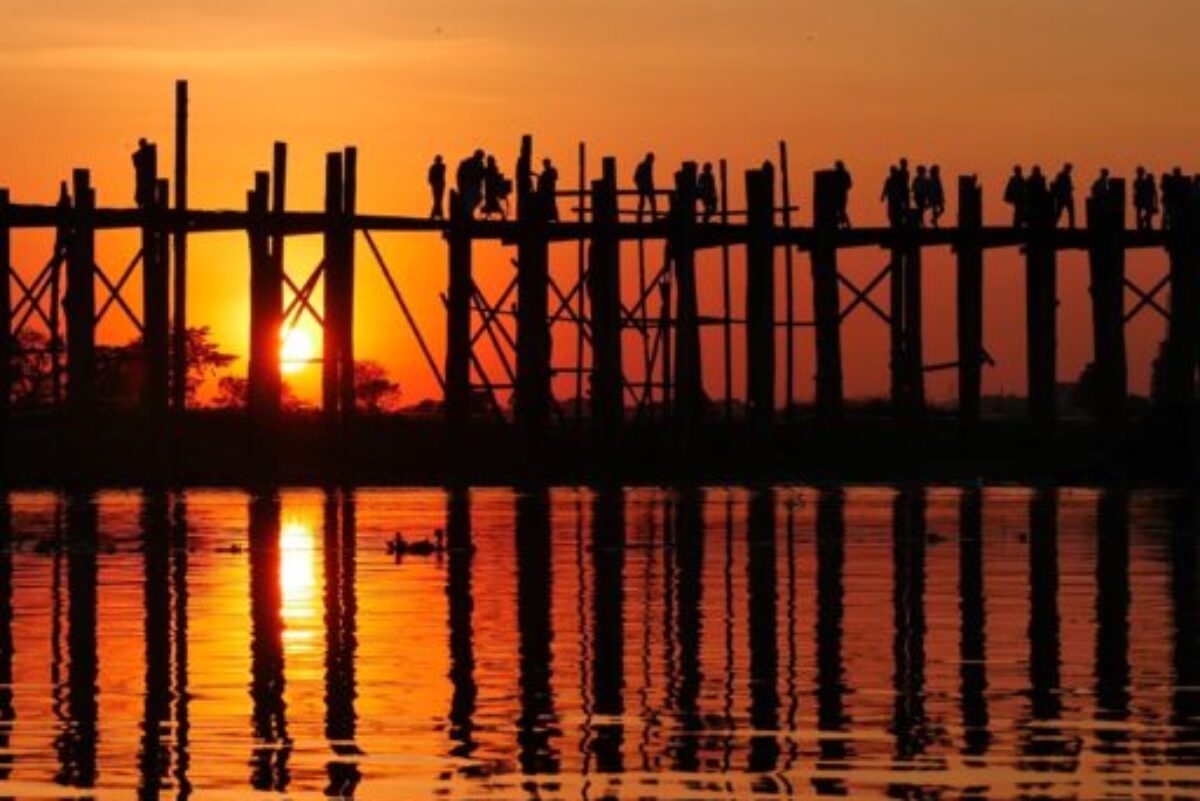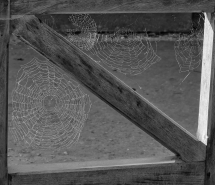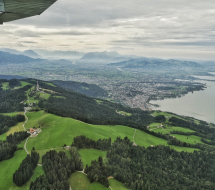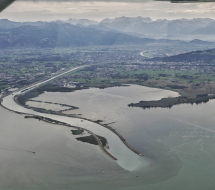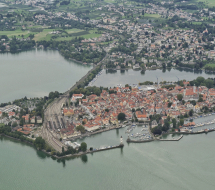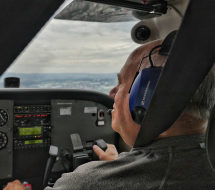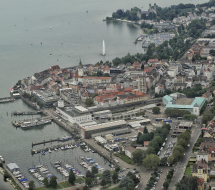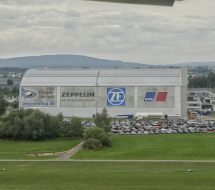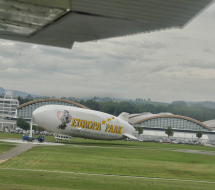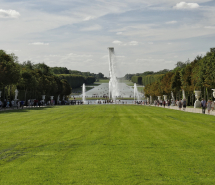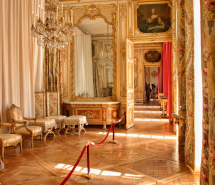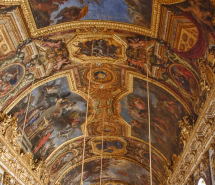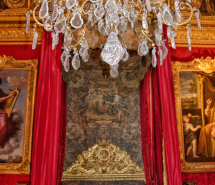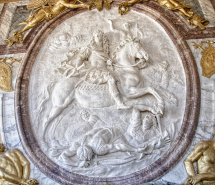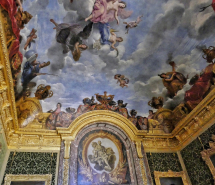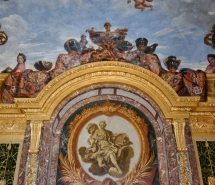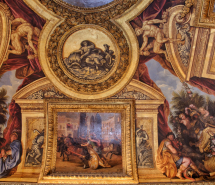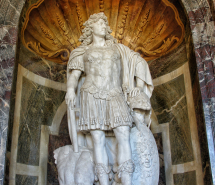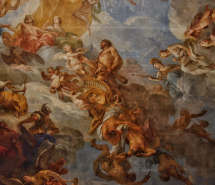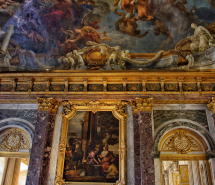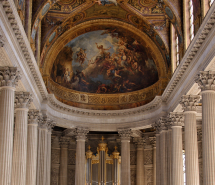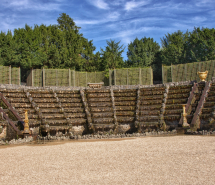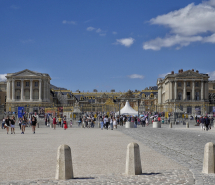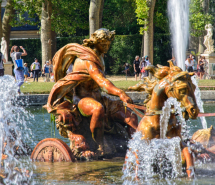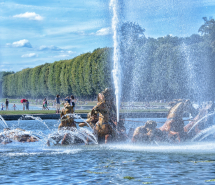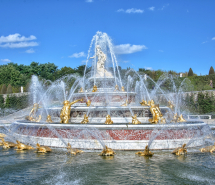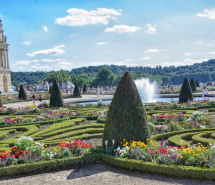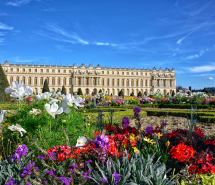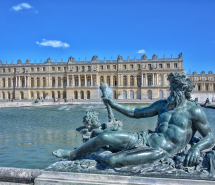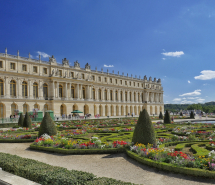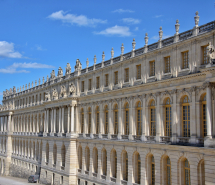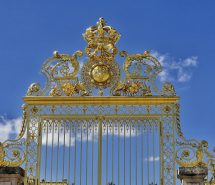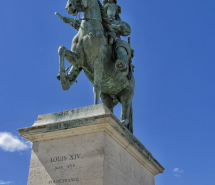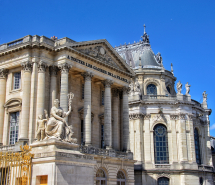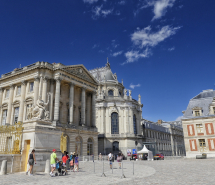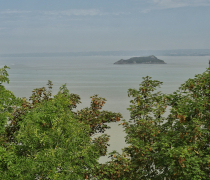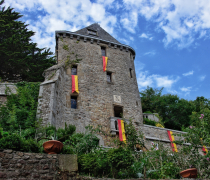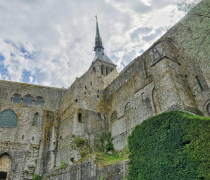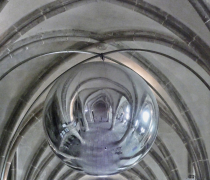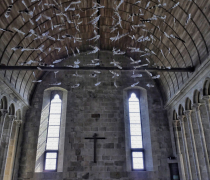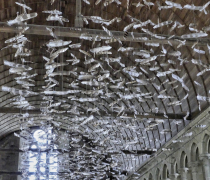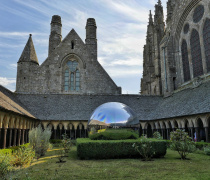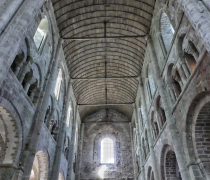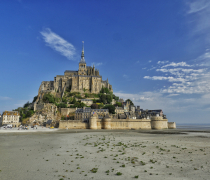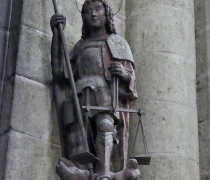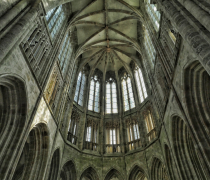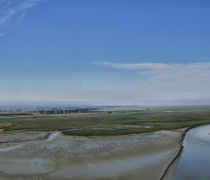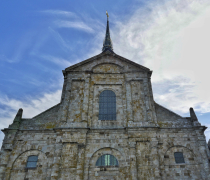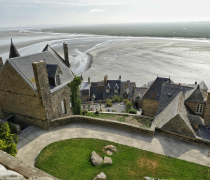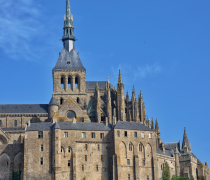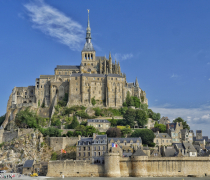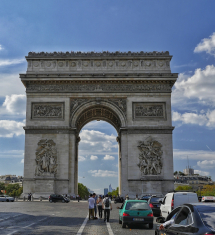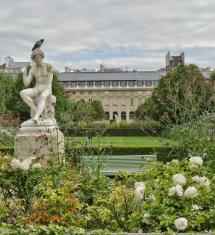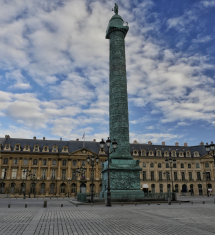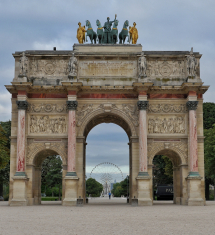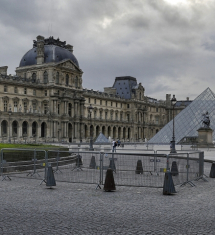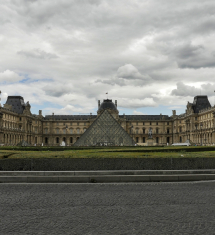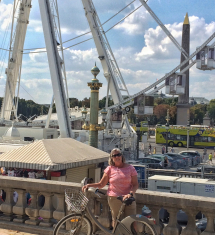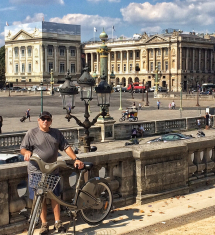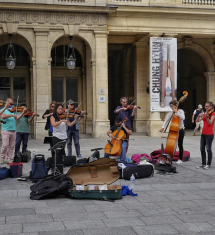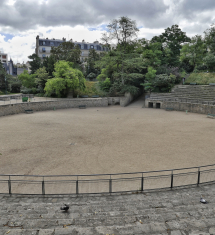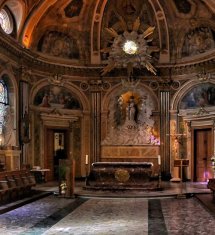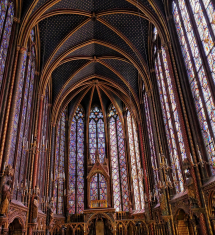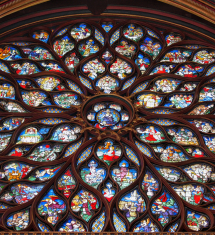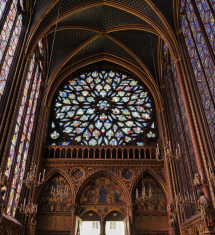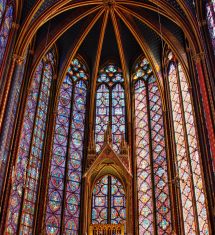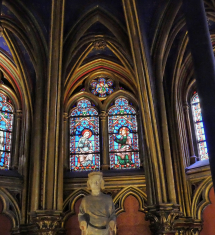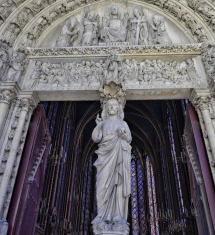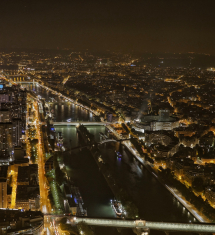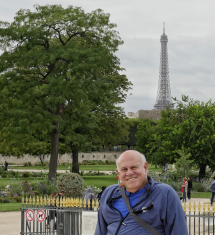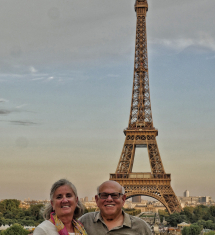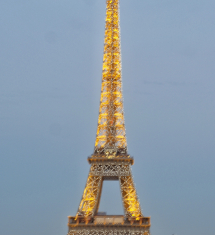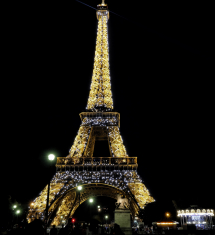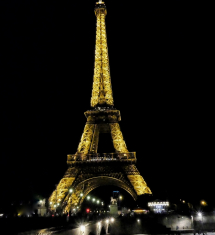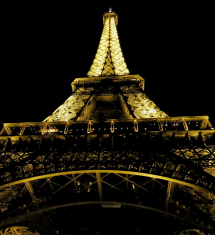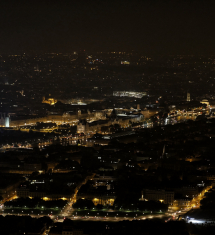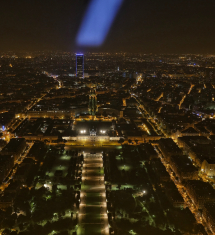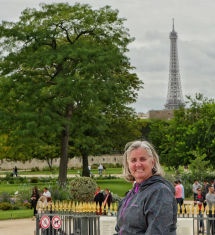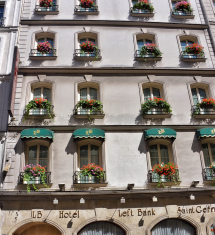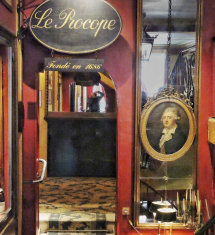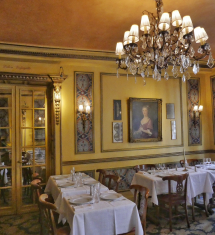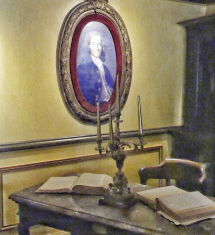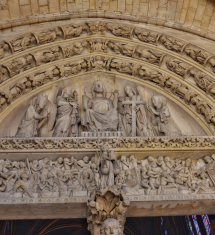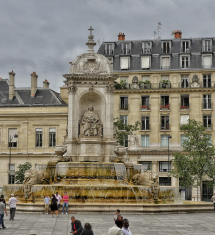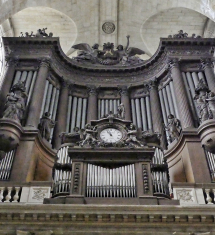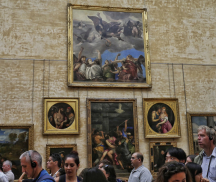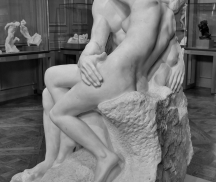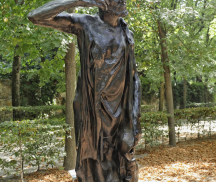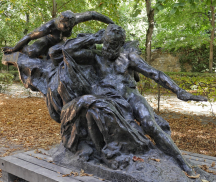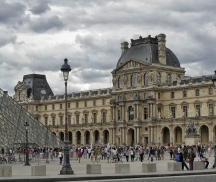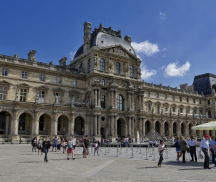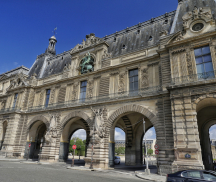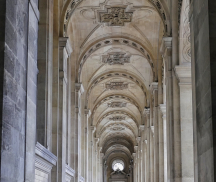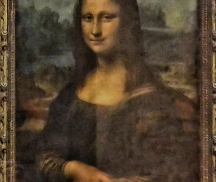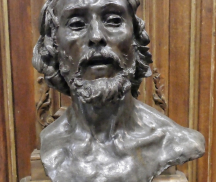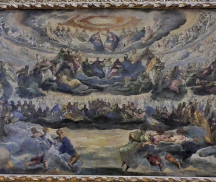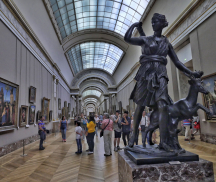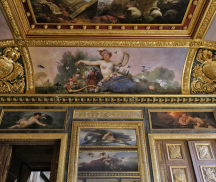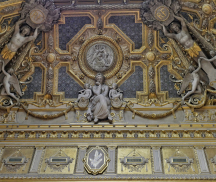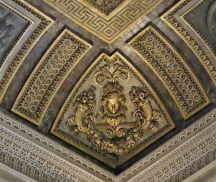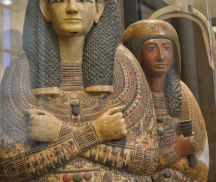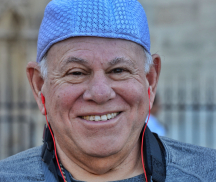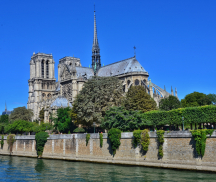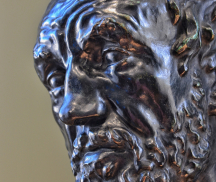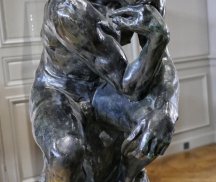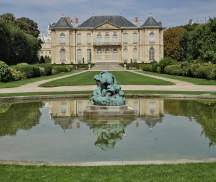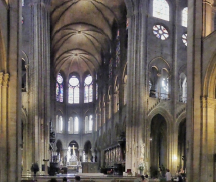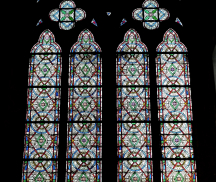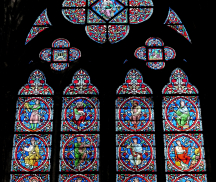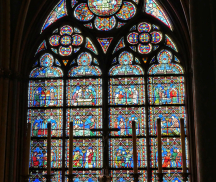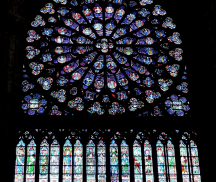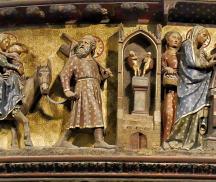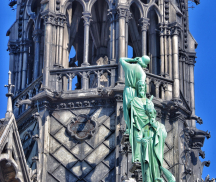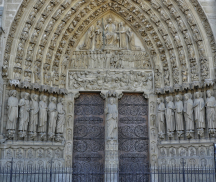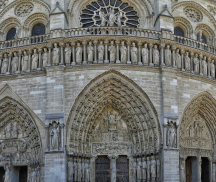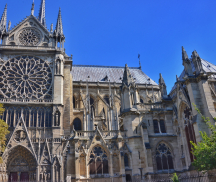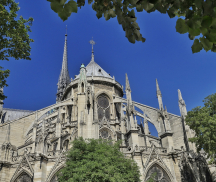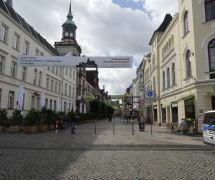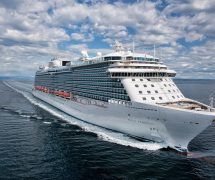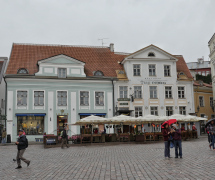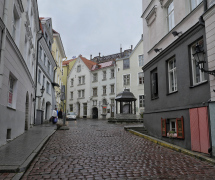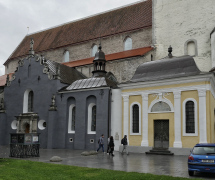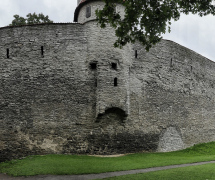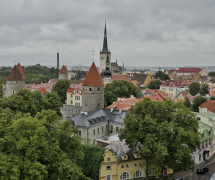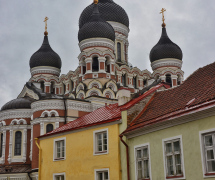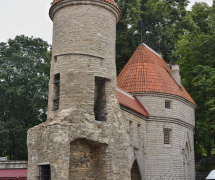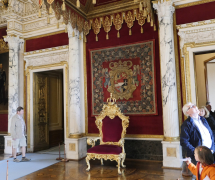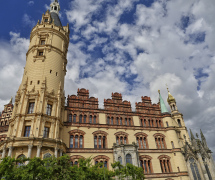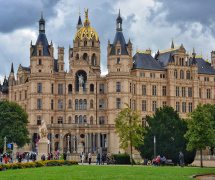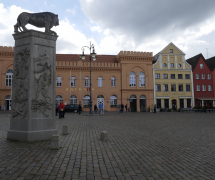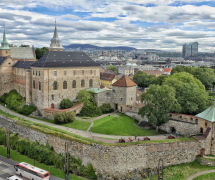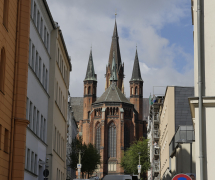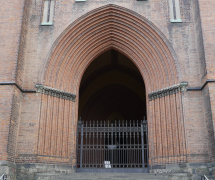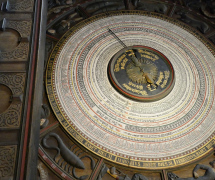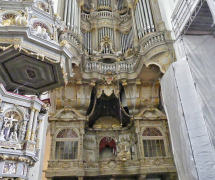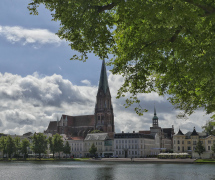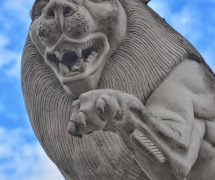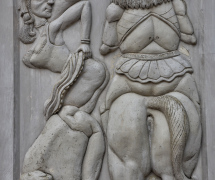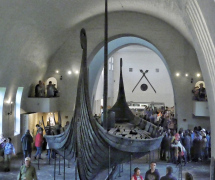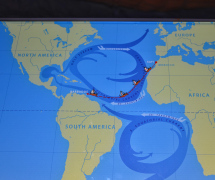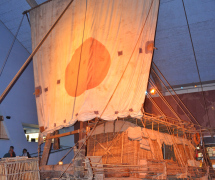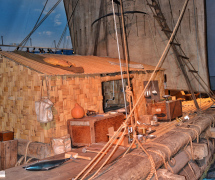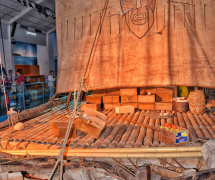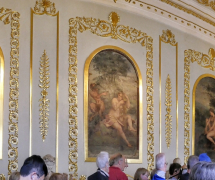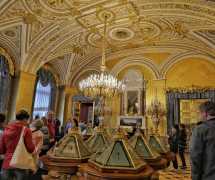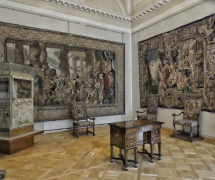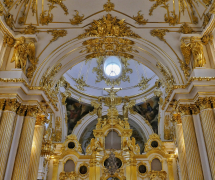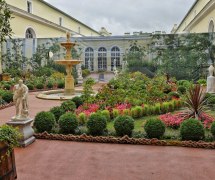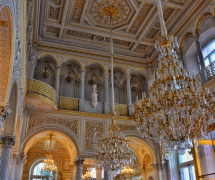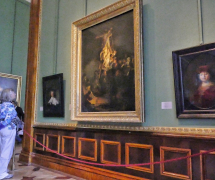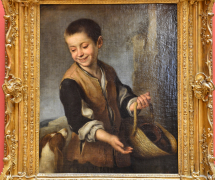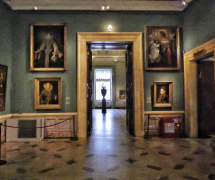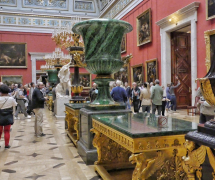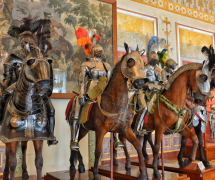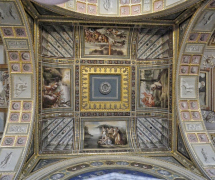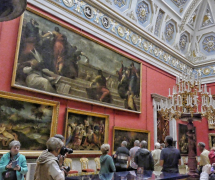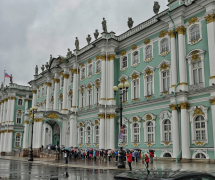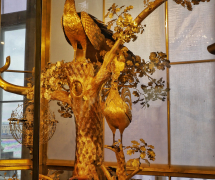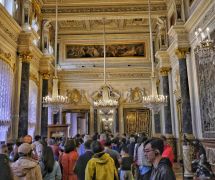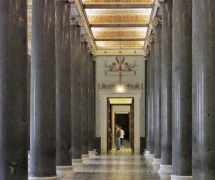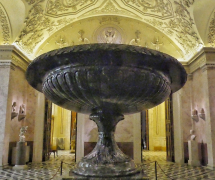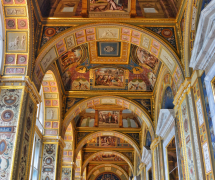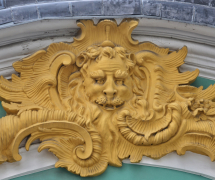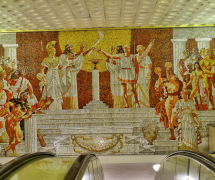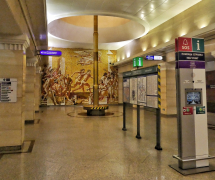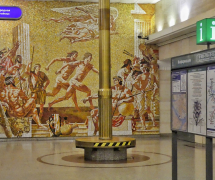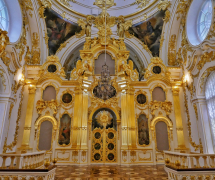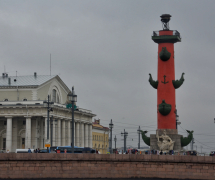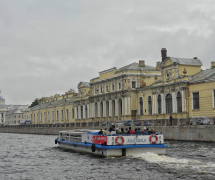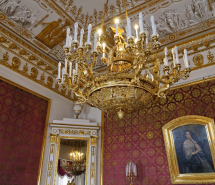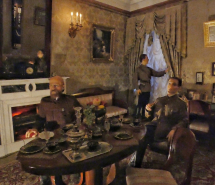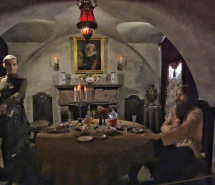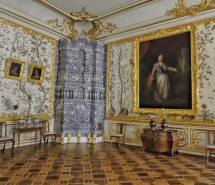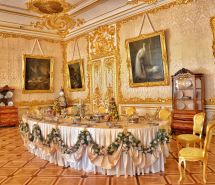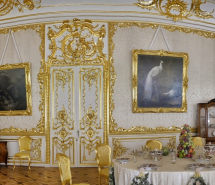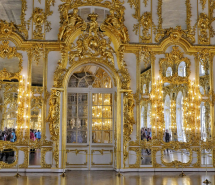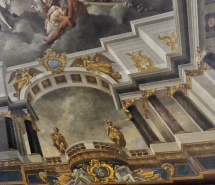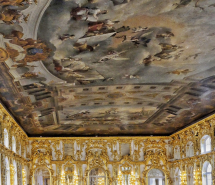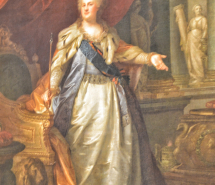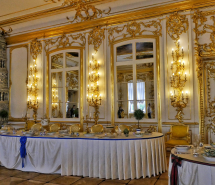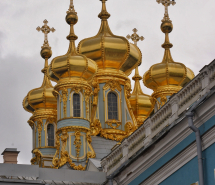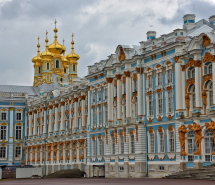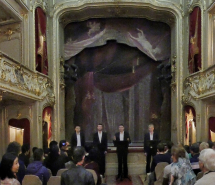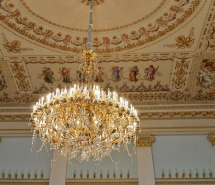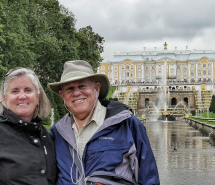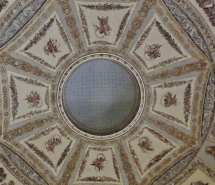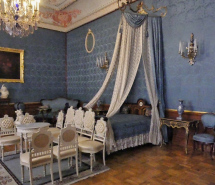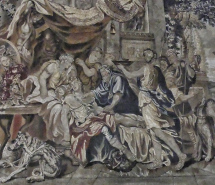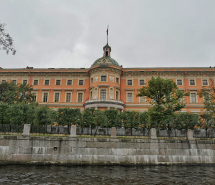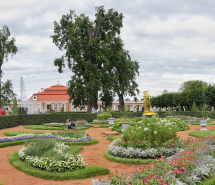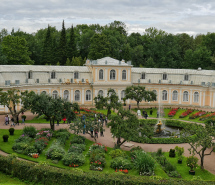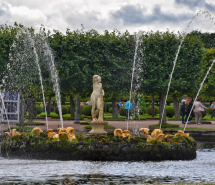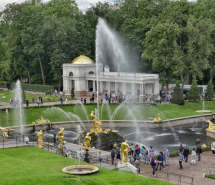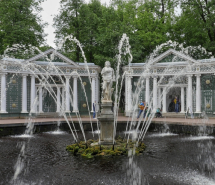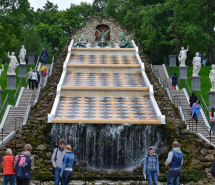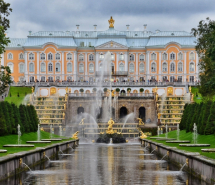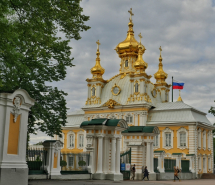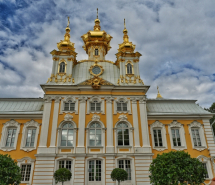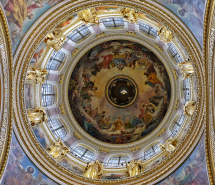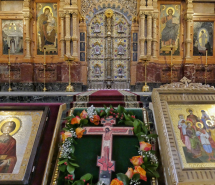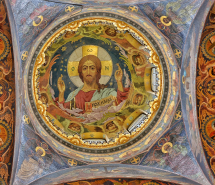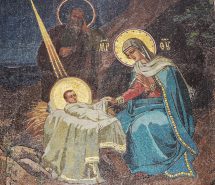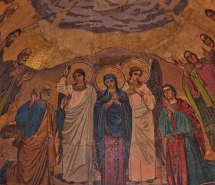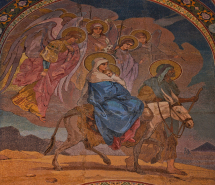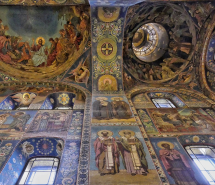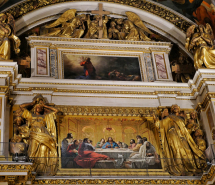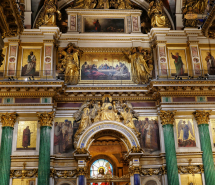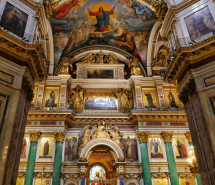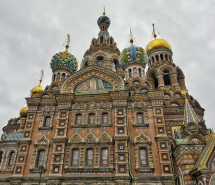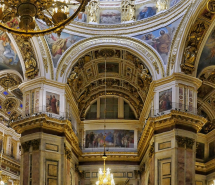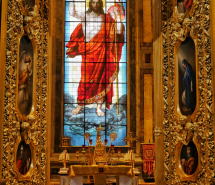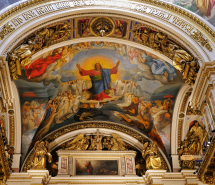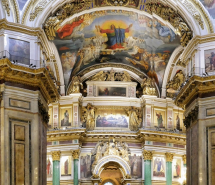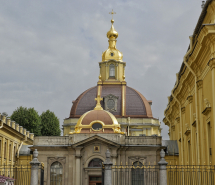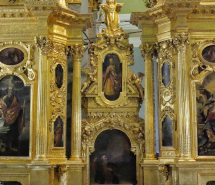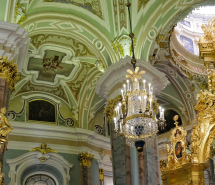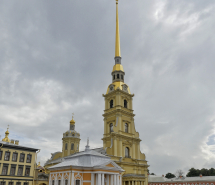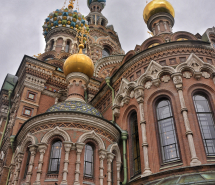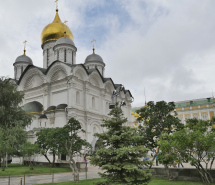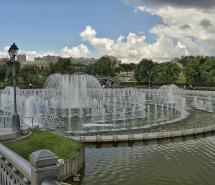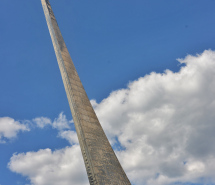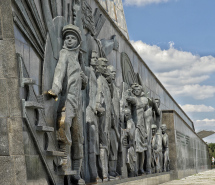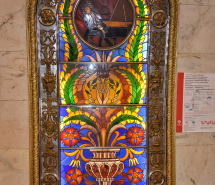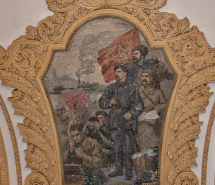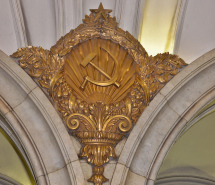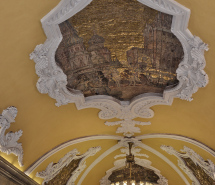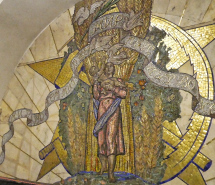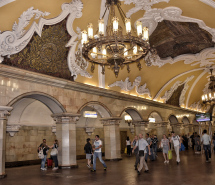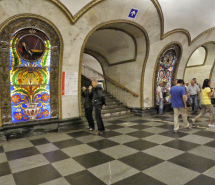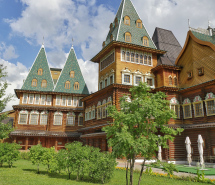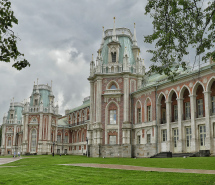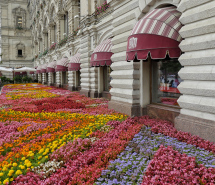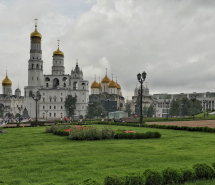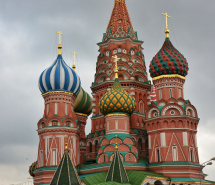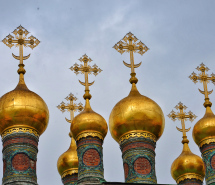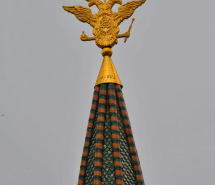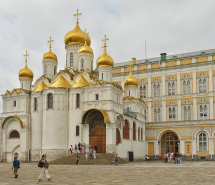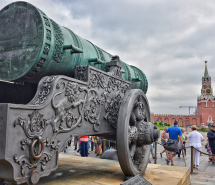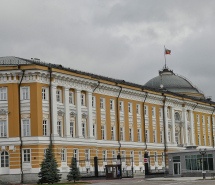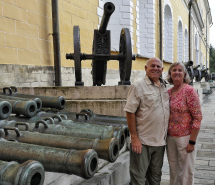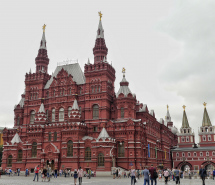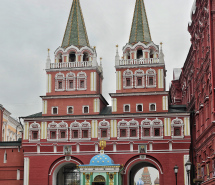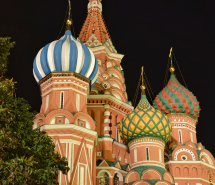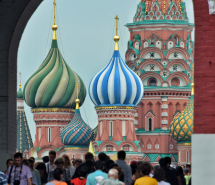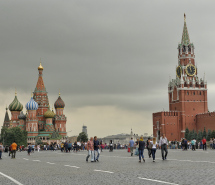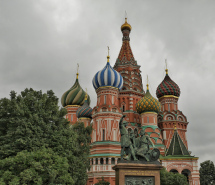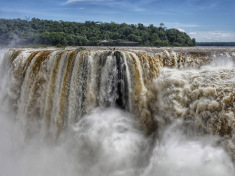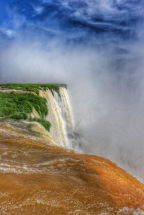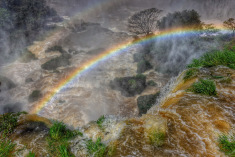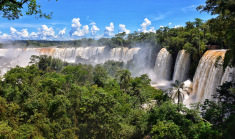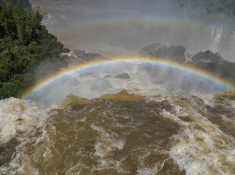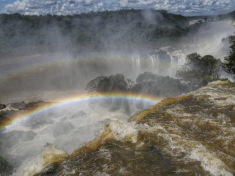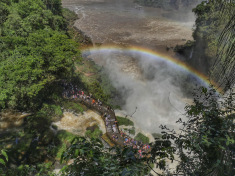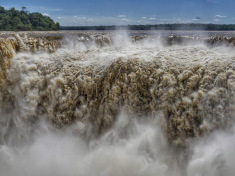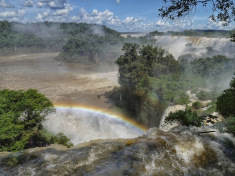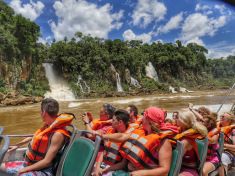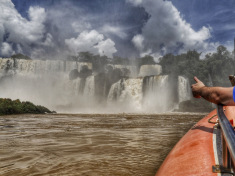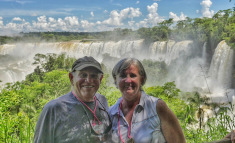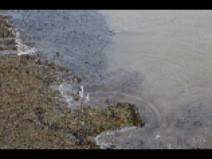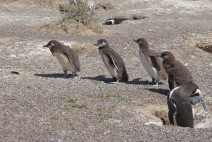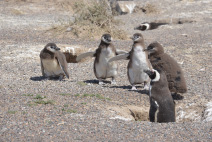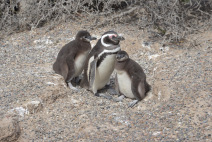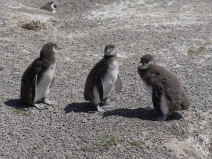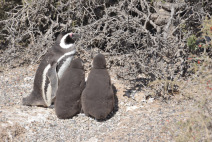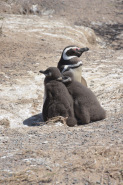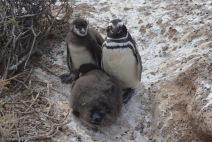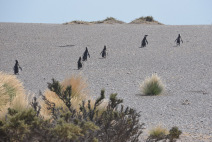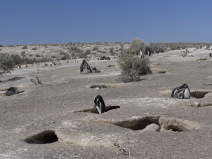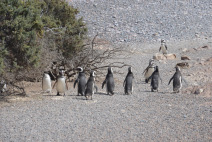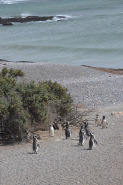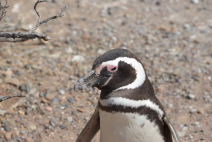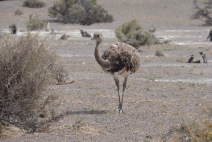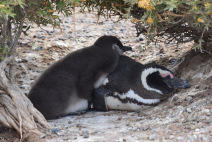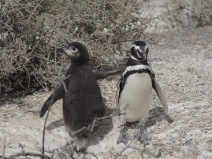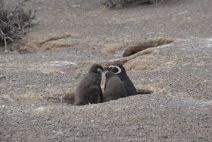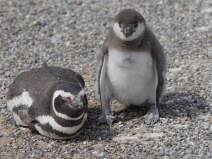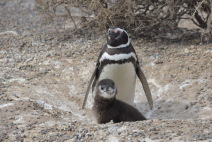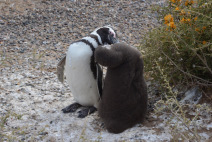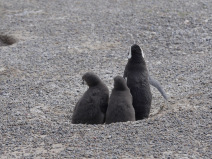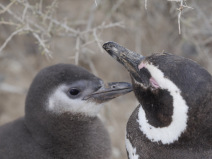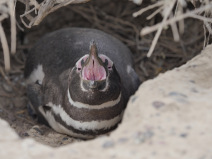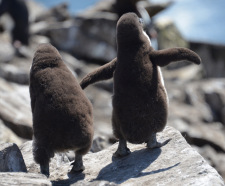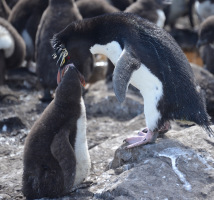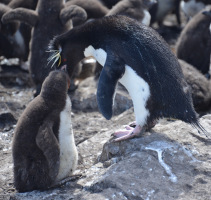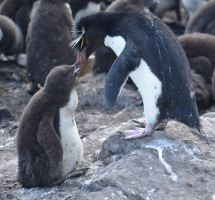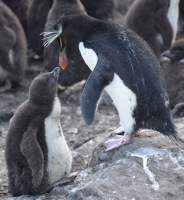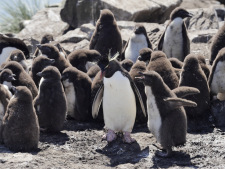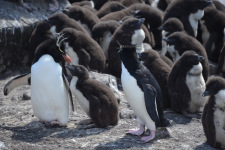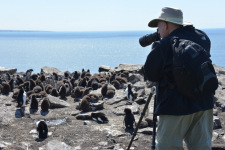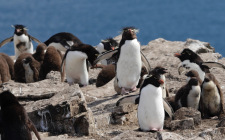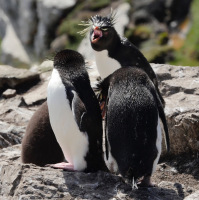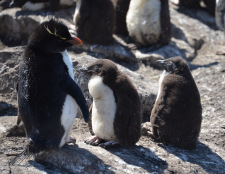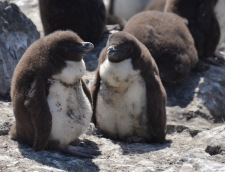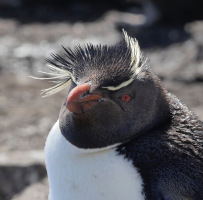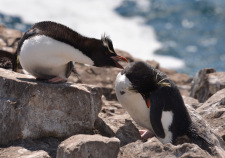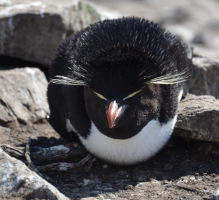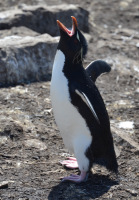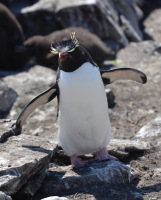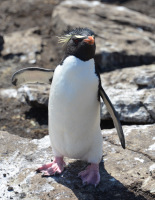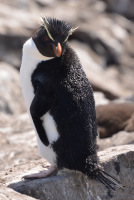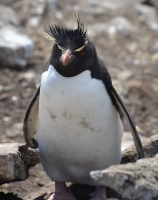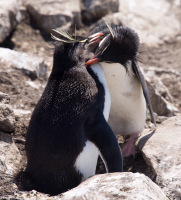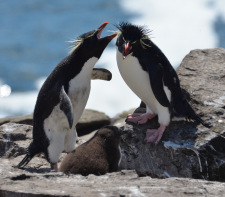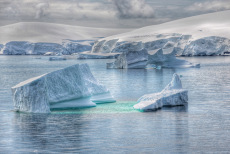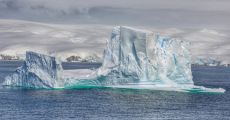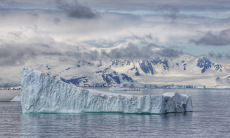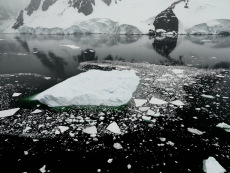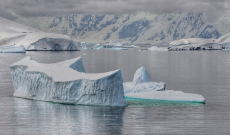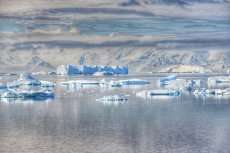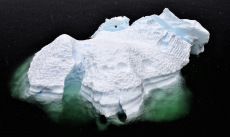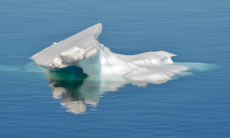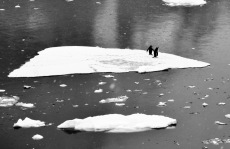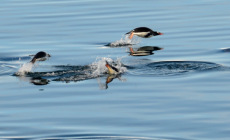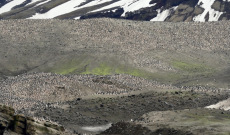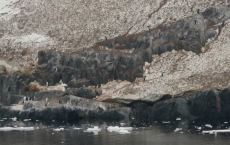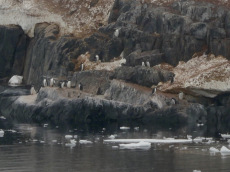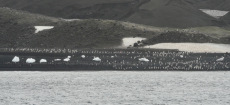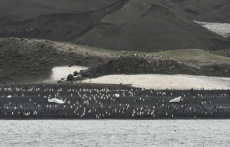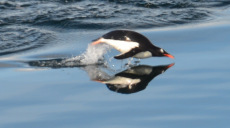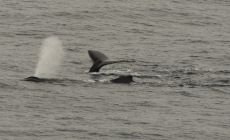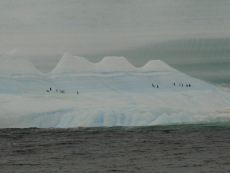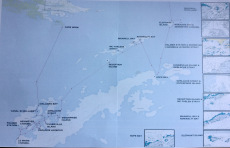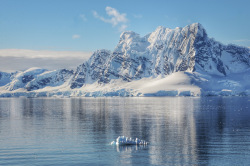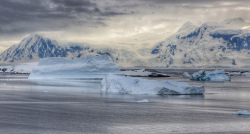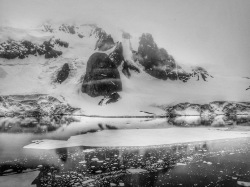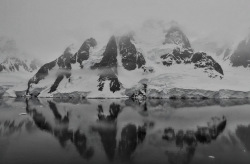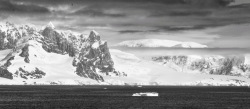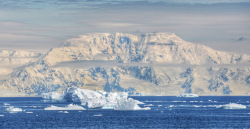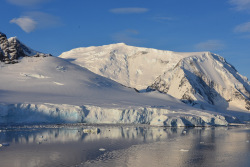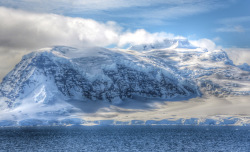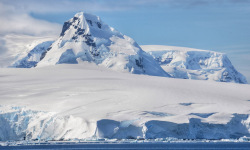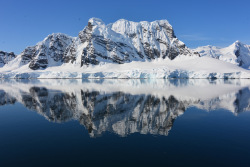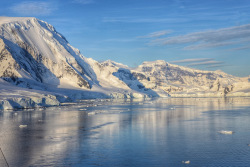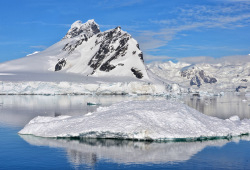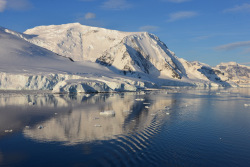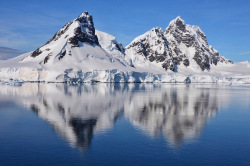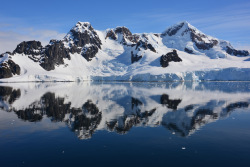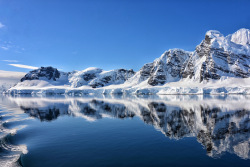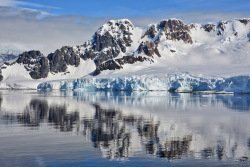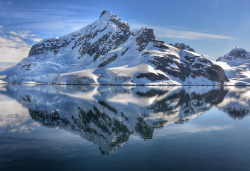Our European journey began on August 1, flying from Atlanta to Moscow. On October 30 we embarked on a transatlantic cruise arriving in Tampa on November 13. We boarded the ship with all our luggage and our two kids, our two e-bikes that we purchased in Germany. Today while visiting our final port (Funchal, Maderia, Portugal) in the EU, we got the necessary form stamped allowing us to get the VAT tax refund for our bicycle purchases. They needed to see the goods, so while we had the bikes off the ship a short ride around Funchal was in order.
Category: International Travel
Barcelona Spain area highlights
For two weeks we enjoyed the manic of Barcelona. We attended concerts, rode bikes by the beach, ate tapas and drank Sangria. We lived in an apartment in one of the residential neighborhoods and tried to blend in. The Castilian people are vying for a new European country of Catalonia, and you see their patriotism hanging from balconies. The locals hold folk dancing every Friday and Saturday night and have resurrected their original language. When we were in Barcelona three side trips really stood out to us:
Montserrat
We arrived in the pre-dawn dusk – the sun came up over a huge bank of clouds. The views of, and from the top of the mountain are stunning. The mountain juts up out of the earth in an other-worldly way, and it is easy to see why over the centuries this was considered a holy site.
One of the most famous tourist attractions in Catalunya in the northeast part of the Iberian peninsula is the Monastery on Montserrat. Set on top of a craggy mountain (Montserrat means, literally, “Saw Mountain” in the Catalan language) the Benedictine abbey is known for its famous boys choir and the Virgin of Montserrat, a statue of a black Madonna and child that has been attracting pilgrims to the mountain for many centuries.
It is one of the black Madonnas of Europe, hence its familiar Catalan name, la Moreneta (“The little dark-skinned one”). Believed by some to have been carved in Jerusalem in the early days of the church, it is a Romanesque sculpture in wood from the late 12th century. Legend has it that the Benedictine monks could not move the statue to construct their monastery, choosing to instead build around it. The statue’s sanctuary is located at the rear of the chapel, where an altar of gold surrounds the icon, and is now a site of pilgrimage.
Girona and Figueres (Dali)
Salvador Dalí, the genius of the surrealism art movement was a Spanish Catalan artist, illustrator, sculptor, author and film maker. Dalí was of one of most famous artists of the 20th century and he changed the world with his fabulous surrealist imagery and flamboyant personality. The main Dalí museum is called the Dalí Theatre-Museum and is in Figueres which is 2 hours north of Barcelona. The Dali Theatre museum was created by Salvador Dalí himself in his home town. It is the biggest surrealist work of art in the world and perhaps the most fun, original and creative art museum in the world. The museum is structured like a circular maze with many crisscrossing paths. Whether you like Dali or not hands down the most batshit and amazing museum I’ve ever visited. Dali was a real character, and you see it within every detail of the museum.
Girona is a beautiful city, nestled on the banks of the Onyar River. It is located in the northeast of Catalonia, Spain, about one hour’s drive from Barcelona. It was chosen by the HBO Seris Game of Thrones. There are 6 or 7 locations from season six of the show, for example, from the scenes outside the sept in Kings Landing to where Arya fought and ran from the assassin in Westeros. It was cool to compare how the locations look now versus scenes from the show.
The medieval sector was once home to the Jewish Quarter or Call. It consists of a labyrinth of narrow streets and patios that have maintained their medieval atmosphere. It is one of the best preserved Jewish quarters in the world and clear evidence of the importance of the Jewish culture in Girona.
Begun in the 5th century, by the 12th century, Girona was home to a large Jewish community. and one of the most important Kabbalistic schools in Europe here. King Ferdinand and Queen Isabella demanded all their subjects convert to Christianity. The Jewish population refused and so were expelled from Girona in 1492. Members of the community believed they would return one day, so they blocked off their properties and streets in hopes of reclaiming them in the future. The Christian neighbors who were left behind were reluctant to move into these vacant homes for fears of being labeled secret Jews by the Catholic Church. As a result the homes remained unoccupied for 500 years. With time the Call was completely buried under subsequent construction projects. In the 1970’s, the old town of Girona began to be gentrified. A businessman bought the 11th century buildings to create a restaurant. During work on the building they discovered an important Kabbalistic site and sparked preservation and education of a Jewish site in Spain.
We visited the Jewish History Museum which aims to tell the story of the Jewish Communities of Catalonia, which throughout the entire medieval period formed part of and made decisive contribution to the history of the country and its cultural and scientific development.
Sagrada Familia. (Holy Family Basilica)
The Sagrada Familia, inspired by nature and faith, has been under construction since 1882. Six new towers are being added to this Catholic basilica in Barcelona, bringing the total to 18 and — at long last — finishing the work begun by Antoni Gaudi. When asked why the project was taking so long, the pious Gaudi was fond of saying “my client is not in a hurry.” He was talking about God. When asked why he lavished so much care on the tops of the spires, which no one would see from close up, Gaudi answered: “The angels will see them.”
The first thing a visitor notices upon entering is the size of the main chamber,. With a stunning array of columns that are constructed to look like trees growing inside the basilica, the roof stretches far above the viewer, to a height that’s almost vertigo-inspiring from below. It all contributes to a sensation that although one is standing indoors, one could just as easily be outside, in a crisp white forest ringed by some of the most intensely colorful stained glass windows you’ve ever seen.
The church as 3 stunning facades. The Nativity facade, featuring the holy family, the Passion facade featuring sculptures from the last days of Christ’s life and the Glory facade (which will access the central nave) will be dedicated to the celestial glory of Jesus, in his death and resurrection. (Still under construction)
The stone spires are represented as trees and built with different stone to represent diversity in nature. They vary in color and load bearing strength. Essentially none of the interior surfaces are flat. The branching columns, as well as have a structural function, reflect Gaudi’s idea that the inside of the temple should be like a wood that invites prayer and is fitting for celebrating the Eucharist.
To lesson the load of the roof and bring light into the building, the skylights in between the columns, are built using pieces of golden and green glass to reflect daylight inside. All the stained glass in the apse follows a plan of graduated tones to create an atmosphere suitable for introspection. As the sun moves across the sky, its light further emphasizes the qualities of each facade. Gaudi said that the sun is the best painter and that light from the windows flows over the stones like a stream. The shape and placement of windows create the mottled effect one would see with the sunlight pouring through the branches of a thick forest.
The church is a fever dream of spires and vivid stained glass, ornate facades and ornamental arches. The basilica is a vision inspired by faith and love of nature. He understood that the natural world is rife with curved forms, not straight lines. He noticed that natural construction tends to favor sinewy materials such as wood, muscle and tendon. The lesson of Gaudi is not to copy his solutions but rather to look at nature for inspiration … nature does not go out of fashion.
DNKJourney Logistics
“Nothing compares to the simple pleasure of riding a bike” – John F Kennedy
One day, we learned about electric bikes and it made all the difference. In Santiago, Chile we rented our first electric bike and toured the city — loved it, and with the assistance of that electric motor you could conquer hills that would normally make your legs burn.
An e-bike is a bike with a battery powered motor that will provide extra power when you’re pedaling. Ours has three levels of additional support: 100% ECO; 190% STD; or 280% HIGH; with a range of up to 80 miles. Of course, the more assistance you use, the quicker the battery depletes. This is the key to bicycle touring! We read e-bikes are common in Europe, so that was the beginning of the plan. We pre-purchased a Eurail ticket, before we left USA, which provided 11 days of First Class unlimited train travel in France and Spain for 2 people, for $1,000.
David has always wanted to do an overseas bike tour. In the USA he has completed several tours, mostly in Colorado — but they were durability and stamina events, not sightseeing events. Karen has always wanted to do an overseas bike tour, however, the specter of being the last person to arrive every day seemed to take the fun away.
We went to Eurobike, International Bike Show, in Friedrichstafen Germany to speak with manufacturers about warranties and maintenance consistency on both sides of the Atlantic. The majority of e-bikes use either the Bosch or Yamaha system. We met with the Bosch folks, the leading motor manufacturer, who told us that European version of their system would not be authorized to be exported to the US due to regulations and hardware differences. We met with other manufactures that indicated the same issues as Bosch. We were getting frustrated, ready to give in that our dream of purchasing an e-bikes in Europe was quickly fading. Karen went to listen to music while David continued the mission. As he was wandering, the vast halls of manufactures, he came across Haibike. David knew in advance that this German manufacturer exports bikes to the US. He spent over an hour meeting with them and was assured that their SDURO trekking bike offered the best in service, warranty, quality and price. They even called a local bicycle store in Friedrichshafen and made an appointment for us. This was Saturday, we had to wait to Monday to meet with the store owner. David was getting anxious. We kept busy that weekend and visited the bicycle store first thing Monday morning. When we arrived, there were no trekking bikes in stock. We spoke to the owner and asked if he could locate the bikes in another store. He called around and found the exact bikes at a distributor about 150 miles from his store. He was able to make arrangements to get the bikes to his store, we extended our stay in Friedrichshafen, and on Wednesday we were owners of 2016 Haibike SDURO Trekking RC bicycles.
We wanted to bike in the wine country of France. Which wine country . . . . Well, all of them. Our process was to study the bike routes in an area (e.g. Burgundy) and recommendations of a small to midsize town with good train connections. Then find an AirBnB house or apartment in that town for 1 week.
First, the trains. On long distance trains, you need to make a reservation for your bike, and a seat reservation for yourself. We would try and map out the options ourselves on Captain Train, a French online travel agency which provides a platform for booking train tickets in Europe. However, we always purchased the seat and bicycle reservation at the train station. (The cost of the ticket was pre-paid) Buying tickets from an agent at the station ensured we were always on a train that allowed bicycles and that we had a ticket for our bikes. Most trains have a car designated for bicycles but some trains carry only 4 bikes so this is critical. Traveling with bicycles in Europe typically require traveling by regional trains. These trains a little slower but still reach a speed of over 100mph. The high speed trains travel at 180mph and the bicycles are strapped to a row of seats. In our journeys, we had the luxury of three high speed trains.
Buy a bike ticket and load your cycle onto the train yourself. Well load, 2 people, 2 bikes and 2 suitcases and a pannier. Up 3 narrow train stairs, and through an electric door, in less than 90 seconds. I never took any pictures of this part because we were always scrambling. The only down side is the heaviness of the bicycles (velos or bici) (50 lbs) and that comes into play loading and unloading them on trains and “hanging” them on bike racks. It took two of us to lift the bike on the hangar. Train stations are in the center of cities, and we picked small cities. You can roll down to the station, board your train, and enjoy the ride and the view as you read, nap, listen to a podcast, or catch up on blogs.
The AirBnB portion of the planning was pretty straight-forward. We always wrote our hosts to confirm they were comfortable with bikes and had secure storage. Everyone was, with a balcony or a garage where we could leave them in a covered safety. From our experience, our hosts got a kick out of the fact that we were traveling in such a unique and healthy way.
One week per region seemed the right amount. It would equate to 3-4 days of riding, a day of touring with an outfitter, a day for the local sites and the market (always amazing) and another day or 2 for rest or inclement weather. We were traveling and living, not a bike tour which must keep a schedule rain or shine. Then a travel day . . . . This trip we traveled thru Burgundy, Provence, Rivera, Bordeaux, Loire and Toulouse before heading to Barcelona.
Despite challenges, planning our own bike tour gave us flexibility, got us off the beaten path, and made us self-reliant. And although there was no SAG wagon, we were not completely unsupported: our hosts were great sources of information, lots of friendly bike shops, accurate maps and bike apps, and delicious food in every town. The local Tourist Information office would give you a plethora of maps and brochures on the tours that could not be completed on two wheels.
We relied on France’s railways to visit a wider range of places than we could have by bicycle alone. In France, we never had a problem showing up at a train station and buying a ticket for the same day. The regional trains (TER in France) stop at each small town along the way, and bikes do not need a reservation, because they travel free! We traveled to someplace interesting, cycled and toured all day, or started at one station, ended at another catching the train back “home”. The pattern was always the same: spot the designated bike car as the train arrives, make a dash for it, and get the bikes on board and stowed, possibly removing the panniers in the process. Having a bungy cord or a piece of nylon webbing with a buckle to help stabilize the bikes, and lock them together, it gave us peace of mind if we couldn’t sit near them.
I should mention that getting from the street level to the train was often the most adventurous. To and from the street level into the platform tunnel we would find escalators or elevators. One bike, then the luggage, then the second bike. Only once did the unaccompanied luggage fall over — the victim had a wonderful sense of humor! Lots of times, it was a two person carry from the bottom of the train tunnel to the top of the platform.
The only thing left to do is get these bikes home. Lithium batteries are not allowed on airplanes, so we depart by cruise ship on the Norwegian Jade from Barcelona and will arrive in Tampa 14 days later. Our departure date is 89 days after we entered the European Union (they have a 90 day max). On the last EU port, (Maderia, Portugal) we will get a customs stamp and a 20% refund of the price we paid – the VAT refund, that is not applicable to goods purchased by travelers and taken out of the EU. We are lucky to have family in Florida to hold the bikes till we retrieve them. Then bike trails of the USA, here we come!
Being our own tour planners was more effort but it was also well worth it. Researching the trip ahead of time added to the anticipation and helped us learn more about the places we considered going. On the road, we knew we had the essentials with us and that the rest would be available along the way. Each day, we’d wake up, pick a spot on the map, and pedal towards it. In the end, it was an adventure that we were proud to have arranged ourselves.
The last photo in this blog post shows where we have been in France and Germany. We begin our journey to the US from Barcelona, Spain, by cruise ship, at the end of October.
Chateaux of the Loire
Chateaux of the Loire – Being homeless, this was a great opportunity to do some house hunting in France, fortunately for us and our budget none were for sale. These castles originated in the 9th and 10th centuries, when territory in France was divided among individual lords and princes. These nobles built castles to control the area immediately surrounding them, and were both offensive and defensive structures; they provided a base from which raids could be launched as well as protection from enemies. The structures also served as centers of administration and symbols of power. Urban castles were used to control the local populace and important travel routes, and rural castles were often situated near features that were integral to life in the community, such as mills and fertile land. Lords and nobles moved from place to place for months at a time conducting business, so they left their wives and children in the most secure location. Additionally, it was common practice in these days to have a mistress or two, and each woman would expect to be kept in their own castle befitting the man’s status.
Under a king, the raiding and feuding ceased. In this new era, the fortress was either torn down, remodeled, or a new summer home/hunting camp built into what is today the architectural style known as the Chateaux. For example, King Francois 1 grew up in the Fortress of Amboise, and remodeled it to a spacious and homey chateaux. Its place on the River Loire was strategic, since Francois’ administrators could keep track of goods headed on barges to Paris up the Loire, and then to levy the appropriate “import” taxes.
In the mid 1600’s King Francois 1 shifted the center of power in France from the Loire back to the ancient capital of Paris. With him went the great architects, but the Loire Valley continued to be the place where most of the French royalty preferred to spend the bulk of their time. The ascension to the throne of King Louis XIV in the middle of the 17th century made Paris the permanent site for great royal châteaux when he built the Palace of Versailles. Nonetheless, those who gained the king’s favor and the wealthy bourgeoisie continued to renovate their existing châteaux or build lavish new ones as their summer residence in the Loire.
The châteaux’s of the Loire look like a vision straight out of a fairy tale, with their gables, dormer windows, chimneys, turrets and pinnacles. But their back stories involve money, jealousies, envy, corruption, foreclosures and all the things middle age soap opera.
Some chateaux’s are still occupied by the family, they may have one wing furnished in family antiques and occupy another. Other places were ransacked during the French Revolution; the furniture carted away and auctioned off, ultimately, those were given back to the community. The community must charge admission just to keep up with mounting maintenance costs. We observed a wedding at one chateaux chapel and I asked our guide how a bride/groom reserves these grounds and she answered: you must be a resident of this town, no one else can be married in this chapel.
All together we saw 5 chateaux : Chenonceaux, Amboise, Chaumont sur Loire, Chambord and Cheverny. It was a balanced mix of homey, luxurious, remodeled, structures built over successive occupants. . . .
I think my favorite was the red brick guest house of Amboise Castle. King Francois 1 enjoyed companionship with Leonardo DaVinci for the last 3 years of Leonardo’s life. The guest house provided for him has remained intact. Leonardo’s workshop, painting studio, the places Leonardo used as background settings for portraits. Today, the curators have built many of his inventions and have staged them on site: swinging bridges, that were pre-manufactured, and carried to “war” used temporarily and then removed to another crossing. DaVinci’s war implements like a tank or a machine gun. (In the mid-1700’s) It was amazing to see how far reaching his mind worked. Of course, this is where he finished the Mona Lisa (he presented it to King Francois 1) and the museum has a gallery wall where various abstractions of the Mona, perhaps the best known painting in the world, have been created.
Full size photos are available by clicking on the thumbnails.
Vins de Bordeaux
Vins de Bordeaux – Nature has been kind to Bordeaux this year. A bumper crop of grapes, a fine harvest – calculated on the lifecycle of the vine, in other words the sugar content and the ripeness of the grape skins, harvests take several days, or even weeks, depending on the size of the plots. In the Bordeaux vineyards, Merlot and Cabernet Sauvignon grapes are not harvested on the same date, because they don’t ripen at exactly the same time.
The harvests come at the time of year when the grapes are picked, and this determines the vintage of the wine, the harvest year which will be shown on the label: this means that vintage 2016 was harvested in 2016. Most Bordeaux wines are blends that include one or more noble grape varieties. A noble grape is a grape that can produce great wine, without blending. However, the vast majority of Bordeaux wines are produced from blends. Review the map included in our photos for the vast different wine regions in Bordeaux area.
Since we arrived in France we’ve had fresh mornings and glorious days, perfect for cycling — combined with the excitement of the harvest season we really enjoyed cycling the Dordogne River to and around St Emilion; the the Garonne River on the first cycleway in France and the Gironde River and castle hopping in the Medoc Region.
Arriving into St. Emilion by bike is an experience to savor: lush rolling hills, vineyards as far as the eye can see, medieval houses and ramparts, cobblestone streets, picture-perfect piazzas. A photo couldn’t quite capture the amazing beauty of the landscape, so I just stopped along the way to enjoy the experience. The harvest period makes its mark on the wine-growing landscape. In fact, the winding routes down the hillsides are busy with tractors carrying crates of grapes to the presses, while an army of humans moves through the rows of vines.
One day we went castle hunting. The stunning Médoc region, north of Bordeaux, following the left bank of the river Garonne which becomes the Gironde. The south-western French version of the route 66 is known as the Départementale 2. It may have less of a ring to it, and is much shorter (100km), but if you can allow for a long afternoon pedaling – and it takes you though some of France’s most famous winery villages and wine appellations such as Margaux, St.Julien and Pauillac.
One chateau showed us their wine press. They still place grapes into a barrel and hand press the skins for the final juices. They maintain total control over the quality of their product using this final pressing. The intense juices adjust the final product into a satisfying wine experience. One of the many interesting things we learned is that Bordeaux wines are always a red and always blended wine. It is a requirement of their appellation that a winegrower use their unique blend of wines to create a Bordeaux red. With microclimates, microsoils, curing and oak barreling plus winemaker choice on the percentage of merlot, cab sav, and other red grapes, Bordeaux produces thousands of options, all of them great.
We smiled the entire time in Bordeaux. It was exciting to share the wine harvest and this exquisite bicycling area. The wine producers are smiling too, as they start the most exciting time of the year.
We really wanted to explore one more area in this region. A bicycle route that travels down the west coast of France, past a few national parks and the sand dunes of France. However, not all things go picture perfect. The David and Karen Journey requires some quick thinking . . . Fall maintenance on the rail line meant that we traveled by bus to Arachon. Once there, mid week, when summer operators back off the tourist high season — well, we ended up in a tour boat on the Bassin d’Arachon. We forgot, somehow that it would be completely in French, so for three hours we just enjoyed a sunny day, snapped a few pictures, enjoyed some French cuisine and of course, some wine.
Karen
(303) 810-8925
Cote d’Azur
Riviera is an Italian word for coastline. The French Riviera (Cote d’Azur) is the Mediterranean coastline of the southeast corner of France. It also means super yachts, villas of the rich and famous, Princess Grace, beautiful coastline, Monte Carlo Casino and Monaco.
We did it all.
We stayed outside the city of Antibes, 3 blocks from the Mediterranean and a half mile from a cycleway which runs next to the sea for over 15 miles. We rode through Nice on its famous Promedade des Anglais and said a prayer at the shrine to the people who lost their lives during the horrific terrorism attack that took place on Bastille Day 2016.
We used the regional train system to move us up and down the coast. One complete day was spent in Monaco. The Oceanographic Museum, a brainchild of Jacques Cousteau, is located there. Next to each water tank is an ipad which educates and shows videos of the animals found inside that tank – available in 7 languages. I figured if Jacques created the aquarium and Monaco funded the project, it would be the highest caliber. It was. Of course, you cannot visit Monaco without encountering the glamour of Princess Grace. Her oldest son, Albert, is the reigning monarch. The historical side of the palace (throne room, reception rooms, etc) is open to the public but no pictures. . . . . And finally, I was able to play black jack in the Monte Carlo Casino. What you cannot appreciate is all the Rolls Royce, Ferraris and Porsche parked outside, and the uniformed chauffeurs waiting for their charges. Again no pictures inside the casino, but you could wander wherever you want. (Karen lost 10€ and David lost 5€ — not large gamblers, and no Rolls Royce sitting outside). We did get our pictures taken in front of the Monte Carlo billboard, such movie stars we are!
The cycleways in France are just excellent. This particular cycle track allows you to follow the wide road for miles, alongside pastel-colored buildings, 30 beaches, endless palm trees and the sparkling turquoise Mediterranean. You get to soak in the beach bathers, the joggers, the sun shining on the super yachts just offshore and punctuate the ride with a stops for drinks at one of the many beach bars right on the Bay of Angels.
One day we took a boat tour of the bays and coastline of Nice. Saw the villas of kings and queens, Sean Connery and Elton John, and the “stone castle” next to the water is reportedly the most expensive house in the world by square foot, though it has been “in the family” for generations.
We visited the Musée Marc Chagall, a French national museum dedicated to the work of painter Marc Chagall – essentially his works inspired by religion – located in Nice in the Alpes-Maritimes. The permanent collection is the biggest public collection of works by Marc Chagall. It is organized around the set of works produced by the painter on the Old Testament themes, supplemented by a large number of works of secular or religious inspiration: over 400 painting, gouaches, drawings, wash drawings and pastels. The museum offers the visitor a first room containing twelve large-size paintings illustrating the first two books of the Old Testament, Genesis and Exodus. In a second, smaller hexagonal room are five compositions on the theme of the Song of Songs, another Old Testament book. Audio-guides in French, English, German, Italian, Russian, Japanese and Chinese.
Finally, we included a picture of what it is like to travel by train with the bikes. The TGV has 4 bike spaces: 2 each in 2 cars. When you reserve your bike, it comes with assigned seating nearby. It is really a convenient way to travel long distances, the worst part is hoisting 2 bikes and 3 bags in the 1 minute or so that the train is waiting in the station.
Please click on each photo to view a full sized photo.
Avignon (Provence) France
Of course, when we first think of Provence, we think of lavender, sunflowers and sitting under a plane tree drinking rosé while munching on olives from the market and cooling off by the fountain. Unfortunately, the lavender and sunflowers are harvested in mid-August and we were in Provence in mid-September, but fall days are glorious in their own right, sun kissed days and walking in history’s footsteps.
The other thing you quickly learn about Provence is its gale force winds. Mistral winds are cold, dry and blow through the Rhone valley on their way to the Mediterranean. We explored the area around Avignon and the Isle de Barthelasse by bike, but the long, hilly vineyard rides were left to David while Karen bought a new sweater and sipped hot chocolate. David battled the winds, thankful for an electric motor on his bike.
Home to seven successive popes, Avignon is the heart of the medieval Christian world, scene of several sieges, this unique palace played a vital role in European history and has UNESCO World Heritage status. From 1309 to 1376, Popes based their court in Avignon instead of Rome; their legacy is a monumental building and the world’s biggest Gothic Palace (the Vatican of France) along side Notre Dame des Doms, the St Peter’s Cathedral of its day. It is impressive in its architecture, even today. The now partial bridge lead directly into the lands and city controlled by the Vatican. It was for many years the only stone bridge along the 186 mile stretch of the Rhône between Lyon and the Mediterranean. So if you elect to cross it, the Vatican would know who you are, what you are transporting, and would collect a tariff. Like other medieval towns, you can imagine toll takers collecting their fees, merchants and peasants passing on the cobblestone streets, people collecting water from the well in the square, meat roasting in the fireplaces, and sumptuous banquets in the great hall.
The evening at the Popes Palace is where magic happens. In a 360° screening that lights up the medieval walls of the inner courtyard, an extraordinary 3D light show reviews the dramatic history of the Avignon Popes and the central role of the Palace. It makes history, the Hundred Years War, the mafia, the royal guests, come alive and explains the human and political dynamics of WHY the Papal Palace was built in France, and WHY it was compelled to return to Rome. It was the finest sound and light show I have ever seen.
Our time in Avignon was short, and very windy. We are constantly reminded that you need to make choices . . . You could wander around France for a year and still not see it all, but we did come to a new and profound appreciation for rosé wine and sitting in a small cafe enjoying your days.
Click on each photo below to see the full image.
Beaune (Burgundy) France
Once inside the wonderful Beaune apartment, we surveyed the cabinets to make our grocery list. We found 2 coffee cups, 2 juice glasses and 6 wine glasses (2 for red, 2 for white, 2 for champagne). HONEY, I said, we must be in France! Wine (glasses) rules. Beaune is a half-hour south of Dijon and the heart of Burgundy winemaking. Home of great Chablis and Rose wines. This lovely, walled city was our home for a week.
Just like kids on Christmas morning, we beamed when we got the new bikes, but now we get to play with them! The wine routes through the small villages was spectacular. Shared with farm equipment, the paved paths went from estates to wineries. One chateau beckoned riders by offering wine by the glass via chilled dispenser, and a lovely garden in the shade, or take advantage of their lounge chairs. Others offered the full wine tasting experience. Along the route, we would find the entrance to one of 3,000 grape growers, the domain of Famille DuBois, the domain of Famille Franc, many have been the family vineyard for generations. We rode the bikes to several Chatteaus (vineyards). We also rode along canals, in a 10 mile stretch where there were 10 locks. We took photos of a pair of boats rising in a lock and barges along the canal.
Karen, unfortunately, had a little accident. (It always seems to happen). She was putting her bike into the rack, it fell and the falling motion propelled her over the top of the bike. A bummed knee and a road rash face was the worst of the injuries. Now that the bike has scratches, I know it is really mine, I don’t have to worry about that pristine look. Whew, thank goodness.
No French town exists without the market. Twice a week, the main street is a myriad of stalls selling a huge variety of goods. We bought picnic food: olives, cheese, meat, nougat, fruit and of course wine. Karen slipped in a bit of jewelry and perhaps a new blouse. We thoroughly enjoyed the tasting, buying, packaging and moving to the next vendor and doing it all over again. I now know where Costco got the idea. Taste it, buy it. Mmmm good.
Finally, we toured the local highlight: Hotel Dieu. This hospital/hospice was founded in 1443 as a hospital for the poor, with another wing for “paying patients”. It remained an active hospital until the late 1970’s, which is how the building stayed in such good condition. The hospital was built near the end of The Hundred Years War (HYW treaty was 1445) and the majority of the town was destitute and suffering from the plague. Burgundy, at that time, was ruled by Duke Phillip the Good, and Beaune was selected because the building site sits on top a river, to provide ample fresh water for the patients. This hospital was built with the mindset of providing the finest possible care to the patients. It was ahead of its time for sanitation, establishing a nursing school, X-rays, and a well equipped pharmacy. The colorful roof pattern is its distinctive feature, the founder wanted all patients to feel as welcomed and cared for as any royalty, the decorations inside and out were the finest, another way the poor were welcomed as an equal child of God.. Along the way many donations, farms, property and of course vineyards were made to Hotel Dieu by grateful families and generous benefactors. The hospital has its own vineyards and is today, as for the past 600-700 years, financially independent and remains free for any who are in need of medical care.
Planes, trains, boats, bikes and zeppelins
A lot can happen in one week.
Lake Constance is bordered by three countries: Germany, Switzerland and Austria. The Euro Bike Show; the everything bicycle trade show, held in the Lake Constance area is 5 convention halls of EVERYTHING bicycle. Parts, clothing, cycle trips and many manufacturers. Our goal was to meet manufacturers of electric bikes and ascertain if products purchased in Europe would be warrantied in the United States. The bottom line is one manufacturer met our specifications, re: warranty and component quality. Haibike, a relative newcomer to the US market, had an exceptional product and introduced us to a store owner.
There was free time amid this bike shopping event. Room for a few good German beers, some schnitzel some history lessons. Konstanz, the town, is located on its namesake lake, and is physically abuts Switzerland. It is a lovely German town, with medieval buildings intact and traditional German architecture, pedestrian malls, and small outdoor cafes. The original buildings survived the war. You know why? Because the town fathers told everyone to keep their lights on; bomber pilots could not tell the difference where Switzerland ended and Germany began, and in an abundance of caution, left the town completely untouched.
The other side of the lake, Friedrichshafen, was leveled for two reasons: it was Germany, and it was a military/aviation center. The first zeppelin in the world took off from there in 1900, and remains one of two places in the world where they are built today. (The second place is the US Navy). Aviation attracts aerospace engineers, who attract experts in structures, electronics and engines, etc. Friedrichstafen (and zeppelins) attracted a brilliant engineer named Claude Dornier. The museum exhibits his aircraft designs, the work of the Dornier company and aerospace products of the Airbus Group. A MUST SEE for the aerospace person in our life, David. It was a very impressive museum, and even I sense how complex/brilliant the work is.
The museum is co-located on Friedrichshafen airport. Well the aerospace person would just go take a look, and then you having coffee with other pilots, a couple phone calls are made and then you are climbing into the right seat of a Cessna 172 preparing to fly over Lake Constance. Yep David gets to fly in Germany. (Life is good). We were able to see the Swiss alps in the distance. The Rhine River coming out of the foothills and drain into Constance (the lake). (You can see how they built the silt-way so far into the lake). Lovely Constance (the town) from the air, and Lantau both parts of cycleway around the lake. Austria was so velvet green.
Then, after all the aviation, OUR BIKES WERE DELIVERED. We celebrated with a beer on the lakeside, and an announcement on Facebook. We named them Hansel and Gretel because they were born in Germany. Like “kids on Christmas morning” we smiled as our first ride was on the cycle way to the local therme in Meersburg. A therme is a large hot springs pool open to the public, and where you can soak, swim or relax.
I guess we needed an afternoon of relaxation, because we and our electric bikes are off to the French wine country. Remember: pedal, pedal, sip, sip.
The Palace of Versailles
When Louis XIV was a small boy he lived in the Palace which today is the Louvre. He would go to the countryside with his father, and stay in a small hunting lodge. That small lodge became the basis of the Versailles Chateau. Louis XIV built this opulent palace, filled it with art, luxury and imposed glory and power on its visitors. It was built to impress. The gardens and fountains were built simultaneously, and were part of the overall effect the Chateau was to have on its visitors. This palace inspired other greats such as Catherine and Peter to build their palaces in Russia, which we describe in earlier blog posts.
Versailles became a symbol of the height of aristocratic indulgences; Louis XIV often held parties here and invited the nobles to stay. By keeping them away from their estates and in the midst of luxury, Louis XIV reduced the power of the nobles and allowed himself to have more direct rule over France. The Palace allowed only the public rooms to be toured. There were mobs of people, so the vast majority of the pictures were the impressive ceilings found in the ante rooms, ball rooms, and why there was a bed in the public room (I asked myself). I guess the King had a bedroom suite installed to separate his throne room visitors (whose questions and answers were public knowledge) and those with whom he bestowed a more intimate friendship by meeting with them in his private rooms.
While the Palace was grand and luxurious, it was also impossibly expensive to maintain. Historians estimate that maintaining the Palace, including the care and feeding of its staff and the Royal Family, consumed as much as 25% of the entire national income of the country of France.
Which is why the French Revolution began at Versailles! (Albeit, a couple generations later)
In search of a solution to the serious financial crisis his government was going through, Louis XVI convoked a meeting of the Estates General in the spring of 1789, i.e. a meeting of the three orders – the Nobility, the Clergy and the wealthy business class. The wealthy business class were hoping for reforms. They were quickly disappointed and refused to submit to royal power.
The business class was aware of the success the American colonies had against the British Empire back in 1776. They joined forces with some of the clergy to comprise the National Assembly on 17 June 1789. The King opposed this Assembly by closing the room at Versailles, where they were meeting. Finding the doors closed on 20 June, the deputies went to a nearby gymnasium and took the famous Jeu de Paume Oath:
“We swear not to separate and to reassemble wherever circumstances require,
until the Constitution of the Kingdom is established and built on solid foundations.”
The founding event of French democracy, the Jeu de Paume Oath is the origin of the separation of powers and national sovereignty.
Normandy France
Traveling brings insight into words and history.
For example: What does “D-day” mean? Hints of the true meaning can be found long before WWII in a U.S. Army Field Order. The order stated that “The First Army will attack at H hour on D day with the object of . . . The use of D-day allows military personnel to easily plan for a combat mission ahead of time without knowing the exact date that it will occur. Given that planning for the most famous of all D-day’s in June of 1944 started way back in 1943, and that, due to factors like optimal tides, only a few days in a given month were suitable for the launch of the invasion, trying to fix a firm date in the planning process was pointless, even close to the time of the attack.
Seeing the realities soldiers of the free world and the peoples of France had to face was a real life history lesson to David and I. Since we did not have any first hand experience of World War II, no family members story, we opted for an high level tour of Omaha and Utah Beaches and a view of the world from the members of “The Band of Brothers” and Saving Private Ryan. We had a homework assignment from our tour group: to watch and be familiar with the docu-series and movie depicting realistic stories from the invasion.
Code-named ‘Operation Overlord’, the D-Day landings were the largest seaborne invasion in history. Early on the morning of 6 June 1944, swarms of landing craft – part of an armada of more than 6000 ships and boats – hit the beaches of northern Normandy and tens of thousands of Allied soldiers began pouring onto French soil.
At 7.10am on 6 June 1944, 225 US Army Rangers scaled the impossibly steep, 30m-high cliffs of Pointe du Hoc. The first Army Ranger accomplished this mission in 5 short minutes using their daggers to help propel them up the cliff. Their objective was to disable five 155mm German artillery guns perfectly placed to rain shells onto the beaches of Utah and Omaha. They managed to locate the massive artillery pieces and put them out of action. By the time the Rangers were finally relieved on 8 June – after repelling fierce German counterattacks for two days – 81 of the rangers had been killed and 58 more had been wounded.
Today the site, which France turned over to the US government in 1979, looks much as it did right after the battle, with the earth still pitted with huge bomb craters. The German command post (topped by a dagger-shaped memorial) and several concrete bunkers and casemates, scarred by bullet holes and blackened by flame-throwers, can be explored. As you face the sea, Utah Beach is 14km to the left.
We roamed the bunkers, with some placements out to sea, to disrupt soldiers on the beach or to sink personnel transport boats before their men could land. The Germans had other gun placements parallel to the beach to shoot in an arc that prevents movement up the beachhead and impede progress toward the headland.
We learned so much about the humanity of war, ships that landed at the wrong beach, missed signals, tanks that could not move forward and act as a shield because of mines planted in the sand, of brave actions of some incredible men, and death, the byproduct of war. We saw small French towns (we stayed in Bayeux) which was liberated by the British and then the Americans and the debt of gratitude these small towns still feel today. Band of Brothers helped us imagine a tank rolling down these ancient, cobblestone roads to the main square.
We visited the Normandy American Cemetery, occupied on land donated from France to the USA to bury our dead if their family agreed to keep their loved ones on the soil where they sacrificed their life. White marble crosses and Stars of David stretch off in seemingly endless rows, situated on a now-serene bluff overlooking the bitterly contested sands of Omaha Beach. Featured in the opening scenes of Steven Spielberg’s Saving Private Ryan, this place of pilgrimage is one of the largest American war cemeteries in Europe. It contains the graves of 9,387 American soldiers, including 33 pairs of brothers who are buried side-by-side (another 12 pairs of brothers are buried separately or memorialized here). Only about 40% of American war dead from the fighting in Normandy are interred in this cemetery – the rest were repatriated at the request of their families.
The Band of Brothers provided more context, we saw where the airborne division landed away from their designated drop zone and one guy was stranded on a church tower; he played dead for two hours rather than get shot. Where members of Easy Company performed a perfect flanking exercise on the enemy position. Where a church became a field hospital, and the medics treated all wounded (German, French and American) and when the real estate changed sides, the Germans respected the humanitarian efforts there and kept their guards outside to protect American medics and the wounded. The French placed stained glass windows in this same small country church to remember that effort and the young American medic who visited this town for years after the war, chose ultimately to be buried in that French churchyard, because it was then and there he spent his finest hours.
Overall it was a sobering day, the price and the value of freedom. Thanksgiving. Small towns that were destroyed and rebuilt. Visions of armored tanks moving down the main streets of these tiny villages, church bell towers as the lookout point. Pictures of GI Joes handing out candy and kissing women after years of hostage under the German Army. An entire generation changed.
Le-Mont-Saint-Michel
On an island located less than a half a mile off the coast of Normandy, lies one of the most incredible castles the world has ever seen. Due to its uniquely strategic position, Mont Saint-Michel has survived countless monarchies and wars since its construction in the 13th century.
The Romanesque abbey church was founded over a set of crypts where the rock comes to an apex in the heart of an immense bay invaded by the highest tides in Europe. The sand below the water acts as quicksand in many places. In the 14th century, the Hundred Years War made it necessary to protect the abbey behind a set of military constructions, enabling it to hold out against a siege lasting 30 years. This great spiritual and intellectual centre, was one of the most important pilgrimage places in Medieval times. The Abbey was turned into a prison during the days of the French Revolution and Empire, and was restored before the end of the 19th century. UNESCO classed the Mont Saint-Michel as a world heritage site in 1979.
Today there is a pedestrian bridge that connects the abbey to the mainland. You meander through the old town and then this amazing architectural building appears (after many steps). There was much damage during the French Revolution, the faces of all the saints and Angels in the plaster was hacked away. The view seemed to go on forever. We arrived at low tide (you can see the mud flats) and left as the water was still coming in. We are so glad we got to see this world renowned place from Bayeux France. Other tours from Bayeux include Normandy D-day beaches, which will be shown and described in our next post.
A short, 2 minute film, is below. Just copy and paste the link into your URL or click on link. No need to enter an email address after clicking.
http://en.normandie-tourisme.fr/articles/mont-saint-michel-298-2.html
Paris by Day and by night
Paris by bike, by night, and by God, it was fantastic
Our first lucky break was the location of the hotel! Staying at the Left Bank Hotel was perfect, it was 2 minutes from the metro station, and no more than 20 minutes walk to the Louvre, Notre Dame, l’Orsay and steps away from the Paris cafe scene. The hotel was one of the 5 “charming boutique hotels in Paris” and will be my go to option again.
We took an e-bike tour of Paris entitled the charms and secrets of Paris. This offbeat, back roads, and untraditional glimpse of a world class city.
Our photos of the Louvre without people were achieved on this day. We walked to the bike tour at 7:30 am, the Louvre square was EMPTY. That never happens! So a few pictures were in order.
As a group we met at a royal square (Place Vendome built in 1699). Part of the King’s city planning was to create a courtyard or large green area with controlled access, the nobility or royalty of the time could meet, socialize, and enjoy outdoor venues/concerts without the worry of pickpockets or other unsavory people. The city has 5 royal squares remaining, and afford the traveler a place to enjoy both air and light in the middle of a big city. An over life-size equestrian statue of the king [Louis XIV] was set up in its centre, but it was destroyed during the French Revolution. Today, the green column celebrates the victory of Napoleon over Europe. Its veneer of 425 spiraling bas-relief bronze plates was made out of cannon (180 cannon were captured and melted down) taken from the combined armies of Europe.
La Procope, originated in 1686, is the name of the restaurant connected to our hotel and one of the highlights of the cycle tour. Although we “lived” next door, we did not realize its historical significance. The restaurant was the hangout of the forward minded thinkers of the day. It is known that Benjamin Franklin wrote the 1st draft of the Declaration of Independence while hanging out at this restaurant. It was the total hangout of Napolean, they have his hat encased by the front door; the desk and the picture overhead in the photoblog is the picture of Voltaire and his desk, who was also a frequent guest. The French Revolution was rooted in this place, you walk on the carpet covered in fleur de lis, the universal symbol of the King or Royalty.
Our guide told us about a plan to expand the streets in Paris and when the construction crews began digging they found an Roman arena in Paris. Constructed in the 1st century, it hosted gladiatorial combats, theatrical productions and mock naval battles. Victor Hugo, an intellectual in Paris was part of a preservation committee in Paris and spearheaded the effort to save the arena. (Victor had also recently had good luck with saving Notre Dame cathedral by writing the book “Hunchback of Notre Dame” so there was a renewed interest in the church.)
The church of Saint Sulpice is most well known for its organ. The sound and musical effects achieved in this instrument are almost unparalleled. An organ concert is performed after church services on Sunday, which of course, we enjoyed very much. This church is also known for their Delacroix Frescoes; it contains hidden metaphors for the Knights Templar. (Delacroix was a Masonic member.) I am not sure I can name them all but this church and its fountains were used in the Dan Brown book and subsequent filming of the Da Vinci Code. You might recognize the fountain!
We visited the church that the French Revolution forgot. During the French Revolution all visible of signs of Christianity were removed from churches by revolutionary armies eager to seek revenge against the wealthy and the powerful. Stained glass windows were smashed, statues and works of art were destroyed, and buildings like churches or palaces were converted to stables or warehouses. La Congregation du Saint-Espirit was earmarked for vandalism, but when the mob arrived, the nun invited them all to the wine cellar to enjoy a glass of wine. The mob drank and toasted the Revolution all night. Thoroughly drunk and probably with a headache, they went home to sleep it off. They forgot to vandalize the church that night and they never came back. So this small missionary community is the only church in the entirety of France that retains all its original stained glass (donated by Marie Antoinette), paintings, decorations. Isn’t it beautiful.
Saint Chapelle. This Royal chapel was finished in 1248, it served as part of the Kings residence until the 14th century. It was built to house the the Kings prized possession: Jesus’ Crown of Thorns. As you enter you are greeted by walls of stained glass, everywhere you look. In my opinion this is the prettiest church in France. It was damaged by the French Revolution, but still remains the largest amount of 13th century stained glass collection in the world. The church hosts classical concerts every evening. Brahms, Mozart, and the sun setting through those windows, only in Paris!
The Arc de Triumph du Carrousel is half the size of the famous Arc de Triumph de l’Etoile, includes similar reliefs, sculptures on the Arc pillars as well as a nice group of statues and gilded figure on the top of the Arc. It affords an unobstructed view west towards its sister arc and is perfectly aligned with the obelisk in Place de la Concorde,Champs Elysees. It also aligns with the “big wheel” which normally sees guests at Christmas time, but was still offering the best view of Paris because France was the host of the summer’s European soccer championship just before we arrived.
We used the city bike program to ride to the historic Arc de Triumph down the Champs Elysees. It was a great way to capture this monument without walking. Did I mention we walked an average of 5 miles every day we were in Paris. We were there for 10 days, do the math.
Mr Eiffel’s Tower, built as the entrance for the 1889 world’s fair, but has become a global icon for France and the rest of the world. David and I scored the “skip the line” tickets at 10pm one night and managed to get to all available floors of the tower, including the very tippy top, The view is incredible. At midnight, people are still buzzing from the view, from pinching themselves that they are at the TOP OF THE WORLD!
Three Paris Icons
Notre Dame, Roudin Museum, Lourve Museum:
The Notre Dame is a french-gothic architectural masterpeice from the 12th century. This amazing cathedral is a visual masterpeice of stone and glass. The Notre Dame is a world renowned historical landmark in paris, literally in the heart of paris. Literally all distances from the city of paris are calculated from a bronze stone in front of the cathedral called kilometer zero. The spire contains copper statues of the twelve apostles with the symbols of the four evangelists. Viollet-le-Duc the architect, represented himself as Saint Thomas holding a square.
It had been years since David or I had been to Paris, and I enjoyed learning about all the years of work and renovation involved in the Notre Dame we see today. My head rotated around and around just trying to take it all in. My favorite part was the lovely, shaded park and garden located beside/behind the building. With the crowds and heat outside on an August afternoon, there was a place, next to the river, where one could find trees, flowers, rest and comfort. I guess I am just showing my age.
Rodin Museum was another garden spot well worth an August afternoon. Did you know Rodin lived with Dante for a year or so, when he needed studio space. So Rodin life’s work was related to Dante’s Inferno and bringing to life the creatures in the layers of Dante’s Hell. Ultimately, the gates of hell, the major characters (the Thinker, for one) were also used by Rodin as independent pieces. Personally, my favorite of his work was his first: the man with the broken nose, which you might find as the man with the character filled face, and a slightly flattened nose. David’s favorite was “the Kiss”. The large yellow house, once a hotel, is where Rodin had his “rooms” and now is the Rodin Museum. The larger pieces are in the gardens surrounding the Museum.
The Lourve museum is housed in the Louvre Palace, originally built as a fortress in the late 12th century. The fortress eventually lost its defensive function and was converted into the main residence of the French Kings. In 1682, Louis XIV chose the Palace of Versailles for his household, leaving the Louvre primarily as a place to display the royal collection. During the French Revolution, the assembly decreed that the Louvre should be used as a museum to display the nation’s masterpieces. The majority of the works were confiscated Royal or church property. So is it really the biggest museum in the world?
Now that we have been to both the Hermitage and the Louvre in the same month, I decided to look it up: In terms of museum size the Hermitage is the largest 24 km (15 miles) of gallery to walk through, 3 million items. In terms of paintings, the Louvre is king – 30,000 paintings, prints and drawings (by comparison the Hermitage has 12,000). The Louvre also has thousands of sculptures and the famous Mona Lisa.
The Louvre is separated into 8 departments. The Nintendo video and audio guide that rents at the start tries to give different walking tours, we were so perpetually lost that we just walked till our feet hurt, and our head hurt, and said, OK, enough of this!
Baltic Cruise
The Baltic cruise included capitals surrounding the Baltic Sea including Saint Petersburg. Cruise included many ports but by far the highlight was Saint Petersburg .as evidenced by the last three blog posts. This post covers the cruise and ports other than St. Petersburg.
We flew from Moscow to Copenhagen, where we embarked on the Regal Princess and 12 day journey. Our kids lived in Copenhagen a long time ago and I fully expected a 5 year old grandson to still be at the airport waiting and happy to jump into my arms. He is now 15 and lives in Qatar, but a person never really forgets these things. Copenhagen is still beautiful, bike lanes in full use and the weather was cold and rainy; so no pictures.
Oslo was the first stop. The boat moored right next to the Akerhus Fortress, steps from the downtown area. Oslo, famous for Vikings and Viking ships and Thor Heyerdahl for Kon Tiki and the Ra. Thor Heyerdahl gained worldwide fame when he crossed the Pacific Ocean on this balsa wood raft in 1947. He was trying to prove the theory that the south sea islands were originally colonized by South Americans. We knew the theory from the peoples of Easter Island who believed they originated in Peru. Thor later built a reed boat “Ra II” and sailed it from Morocco to Barbados. Thor wanted to prove this type of vessel could cross the Atlantic Ocean using only the current and trade winds. This amazing man was truly and Adventurer (Capital A) and the wanderer in us got to see “the rest of the story” as Paul Harvey would say.
Warnemunde Germany, a gateway to Berlin was another stop. We opted to stay near the port city and made a trip to the town of Schwerin and its Schwerin Castle. The Market Square at the center of the Old Town is proudly guarded by a statue of Henry the Lion, Duke of Saxony. The column on which the lion sits depicts scenes from his reign. One of the more curious scenes features several people’ pants pulled down to reveal their buttocks in what came to be known as the “bottom parade.” It seems that when Henry arrived to conquer the town, it’s residents mooned him in order to show their contempt!
The town has a lovely pond and the cathedral sits along its edge, it was made in a Brick Gothic style. Build in 1260 – 1416 it is the oldest building in the entire city. It was not damaged in World War II because the townspeople took it upon themselves to climb on the roof during the bombing and throw off any shells that landed on it.
The Castle is a UNESCO World Heritage Site. It actually sits on its very own island, surrounded by gardens and a park. During Communism (this castle is in the former East Germany) it was turned into a public building and it currently serves as the State Parliament for the German State of Mecklenburg and a museum showing the public rooms of the Duke, including his throne room. It was stunning.
Tallin, Estonia on the Gulf of Finland retains its walled, cobblestoned Old Town, and it’s 15th-century defensive tower. The architecture remains one of the best preserved medieval cities in Europe. It survived this way because it was part of Russia and not a strong defensive position. For a birds-eye view of the city, we went to the observation deck overseeing the entire city.
Helsinki and Stockholm were not camera days for us. Some days it is good to just roam and not be a tourist.
We disembarked in Copenhagen and the same day flew to Paris. Stay tuned for blog posts of Paris and Normandy.
St. Petersburg Hermitage Museum
Good God, what is there to say. It far, far, far exceeded our expectations. I saw more than I thought I would, I liked more than I thought I would, I walked more than I thought was possible, and I was sure I had not scratched the surface of what the Hermitage has to offer. Wealth, lavish and magnificent are the words that come to my mind.
This world famous museum is virtually wallpapered with celebrated paintings, part of the former private art collection of the Czars. The gold laced lavish rooms in which the art resides, are works of art themselves. The name Hermitage comes from Catherine the Great herself, who meant her private apartments to be a place of retreat and seclusion — where she could be a hermit. Catherine the Great took it upon herself to acquire some of the world’s finest works of art. With 400 exhibit halls and gilded salons, it’s impossible to see everything in a single day.
The main artwork of Leonardo, Rembrandt, Van Dyck and the Peacock Clock were astounding. The Peacock clock has a story of its own…The clock consists of a guided peacock on a branch, a rooster and an owl in a cage. It was given to Catherine in 1781 and remains in working order today. At the top of the hour, the peacock spreads its wings and turns in a circle, the rooster crows, and the owl opens and closes its eyes. The mushroom at the bottom tells the hour and a dragonfly acts as the tiny second hand on the mushroom dial.
Catherine had an entire garden planted on the rooftop next to her office. It was here she would go outside and have tea or think, for some reason it made her seem a little more a human, who wished to be a hermit rather than this towering person of history.
St. Petersburg Palaces
If you are a Czar, you need a lot of space. Living in an RV sometimes we wish we had more space, but we consider Camp Casa our little palace on wheels that can be moved to new settings whenever we wish.
A city palace with a private art gallery and throne rooms, ball rooms, guest rooms. Perhaps a 1,000 rooms in all, in 4 buildings would suffice for Catherine the Great. This palace, after the revolution, became the home to the Hermitage. And we will cover the splendor of those buildings and the art in another subject.
They aren’t the only palaces in St Petersburg, there are the other royals, extended family, children and grandchildren who all need a palace or two. The palaces seem to go one, one from another but we saw only a few.
Catherine’s summer place is the blue facade with the gold onion domes marking her personal chapel. That is the location filled with her personal effects, bone china, tapestries and furniture, for public rooms and family rooms. The ball rooms there are still used (other cruise people went back for a baroque concert in the evening), and it is used for New Year Balls or weddings. I can’t imagine the glitter of the evening.
In yet another palace, we were treated to a concert in their personal theatre. Of course, a palace would have one! The quartet was perfect in their classical offerings. One of the guides along the way explained if interested in the arts at age 6 you are tested for rhythm and pitch, dance or art and are given lessons three afternoons a week during elementary school. The field is narrowed for a specialized high school and again for university. The finest are then sent to a conservatory for another 5 years before they begin the professional careers. Then, of course, the best of the best perform at the highest level of ballet, choir, orchestra, dance or art. At the end of the day it is a lively cultural scene. Cultural events are common and affordable in Russia because the arts are just as profitable as being a business person.
We went to another palace to see where Rasputin was murdered. Rasputin, the bearded guy, was a poor peasant from Siberia. Yet the Romanov family, who had an ill son, believed him to be a healer and a seer. Rasputin counseled the family and rose to have an inappropriate amount of influence over the current Czar Nicholas II. Other royalty in St Petersburg were concerned and lured Rasputin to dinner and killed him. These royal people were deported to Europe to pay for their crime, amazingly then, they were the only royalty to survive the Bolshevik Revolution.
The final palace was the gardens and fountains of Peterhof. A beautiful sunny day to stroll the gardens, in the St Petersburg countryside. Peter the Great visited Louis XIV at Versailles, saw the splendor of Louis XIV gardens and attempted to capture the splendor in his own summer palace. There were over 1,000 fountains at Peterhof. Meticulous formal gardens in the French style are adorned with statues and cascades. The fountains of Peterhof were unbelievable! We spent at least 2 hours walking around the gardens viewing the splendor and beauty created by Peter.
St. Petersburg Churches – Russia continues
 The Russian Orthodox Churches are just amazing. Much like Moscow, the churches that remain standing fall into two categories: those attached to Palaces (as family places of worship) and those that were purpose built as a memorial. St Issac’s was built in 1818 to commemorate the victory over Napoleon. It is lavishly decorated with marble and other stones (malachite columns). It was closed during the communist era, which is how it survived to the present day.
The Russian Orthodox Churches are just amazing. Much like Moscow, the churches that remain standing fall into two categories: those attached to Palaces (as family places of worship) and those that were purpose built as a memorial. St Issac’s was built in 1818 to commemorate the victory over Napoleon. It is lavishly decorated with marble and other stones (malachite columns). It was closed during the communist era, which is how it survived to the present day.
In the case of the Church of the Savior on Spilled Blood, the son of Alexander II built that church on the spot where his father was murdered by a terrorist bomb. The multi colored onion dome church in Moscow, Saint Basil (that celebrated the victory over Kazan) was the most spectacular memorial in the land. So, Alexander III believed Alexander II deserved one even more spectacular . . . . He commissioned The Church of the Savior on Spilled Blood. The frescos and paintings were spectacular and all the gold leaf, I can not see churches in the same way again. The mosaics stretch from floor to ceiling (70,000 square feet in total). It survived the communist revolution by reinventing the space as a barn and a stable.
The Cathedral of Sts Peter and Paul is the building with the singular gilded spire, and was St Petersburg tallest building for over 200 years. It contains icons created in 1720. The colors are still vibrant and the artistry is awe inspiring. Peter the Great moved the capital of Russia from Moscow to St Petersburg in 1712. Therefore, all the leaders since that date were buried here in the Peter and Paul Fortress, including Peter the Great, Catherine the Great and all the way till Nicholas II (and his family) the final Czar of Russia. This church survived the communist revolution as a prison.
Три дня в Москье. (Three Full Days in Moscow)
Moscow is a very cosmopolitan city, the women are beautifully dressed and sneakers are not worn unless a is performing athletics, or a tourist is visiting. What I realized is that tourists are performing athletics. In the space of beautiful, interesting and diverse 3 days, David and Karen walked 25 miles!
We decided to use guides in Moscow. Three delightful ladies shared their day with us, showed us a city they loved. Kremlin, means walled fortress and there Kremlins in many towns, THE Kremlin means HUUUUGE fortress in Moscow. (Like THE Donald there is only one!). It is shaped like a triangle with red brick, square towers on each corner, also at the entrance. Notice the double headed eagle on top of the tower, it is the symbol of the Republic. Construction of the existing red brick walls lasted from 1480 to 1495. This structure was being built the same year Christopher Columbus discovered the New World! Our lovely guide Angelina shared the Kremlin with us.
The Kremlin has both a tourist and a governmental purpose. The state office is the big yellow picture. That’s where Putin works. The Armory, where cannon from various wars are displayed, we are standing next to cannons used against Napoleon. The “N” is engraved on the metal and the cannons are named for ladies, much like boats. (No Karen, I looked, it must not have been popular in 1812). There was a Czar’s cannon, it is the largest cannon in the world, and luckily has never be fired in battle.
Uniquely, Russia builds churches to commemorate significant events, wars won, rulers death, etc. We saw three churches, (classified as museums) the Annunciation Cathedral; it served as a personal church of Russian Czars. Czars used to spend some time their, every morning to pray for deliverance from countless perils. The Cathedral of Twelve Apostles is connected to the Patriarch’s Palace and was considered his private church. Patriarch is the title of the head of Russian Orthodox Church. (We didn’t see that one but it is all those crosses, 12 apostles). The Church of St Michael; was used as the cemetery for Czars. And the most important of all and also the biggest church in the Kremlin – the Assumption Cathedral. Since the end of the 15th century it had been the place for every coronation of every single Czar until the last one – Nicholas II. Inside these churches/museums, every square centimeter of walls’ surface is covered with murals, left and right walls picture biblical plots connected to the name of the church.
The Armory houses all the state treasures from Russian history. Its name comes from the actual arms workshop of the Kremlin. Besides arms, it also hosts the collection of royal regalia, carriages, dresses, tableware and ambassadorial gifts. The Armory also contains the Diamond Fund Museum, which is the state jewels worn by the Czars and their family during their reign. Huge diamond collection which includes: raw diamonds exceeding 50 carats; cut diamonds exceeding 20 carats; cut diamonds of exceptional quality exceeding 6 carats; raw emeralds, rubies, sapphires exceeding 30 carats or 20 carats cut unique nuggets, amber, pearl and jewelry, including diamond laid crowns, baubles with 50 carat emeralds, broaches, and rings. It is the third largest collection of precious stones in one place. (First is the Royal Family of Britain, second is the Shah of Iran). Preservation, sales and looting of imperial treasures after the Russian Revolution of 1917 is a matter of controversy and speculation. The Imperial collection was moved from Saint Petersburg to Moscow during World War I; the Soviet Diamond Fund was officially established in 1922 (official site). The treasure was first exhibited to the public in November 1967. Originally a short-term show, in 1968 it became a permanent exhibition. It was impressive.
You move from the Kremlin into Red Square. The big open brick patio in the pictures is red square. It is called “red” because that is the Russian word for beautiful. One side of Red Square is the Kremlin Wall, the second is a large red brick building that houses the Russian Natural History Museum, third was the GUM state department store and the fourth side is ST Basils Church with its onion dome roofline. St Basil, commissioned by Ivan the Terrible, was erected to memorialize the military conquest over Kazan The people of Kazan were colorful, so the architect decided to add the colorful domes to the memorial. It is now of course, a wonder of the world. And, of course, one of the most photographed sites in Moscow.
Also in Red Square, which we did not take time to visit, is Lenin’s Mausoleum (Russian: Мавзоле́й Ле́нина, tr. Mavzoléy Lénina; IPA: [məvzɐˈlʲej ˈlʲenʲɪnə]), also known as Lenin’s Tomb, situated in Red Square in the center of Moscow, is a mausoleum that currently serves as the resting place of Vladimir Lenin. His preserved body has been on public display there since shortly after his death in 1924, with rare exceptions in wartime.
The Moscow subways are public art. On the circle line, 5 stations have murals or stained glass, paintings, etc. People pass through the station rushing like people in all big cities to their destination. Oh to look up, and see the beauty. On a personal note, there was no litter, or tagging, anywhere in the city. It was a beautiful city filled with many parks and fountains, abundant green space and efficient public transport.
We traveled to the suburbs to see the summer palaces of the Czars. One was a log lodge, built by Czar Alexis I, it contains a mere 400 rooms, and the large gothic one belonged to Catherine the Great, however, she died before it was finished so it remains unfinished to this day. This started a discussion with our lovely guide Anna, about Downton Abbey, and the lives of the aristocrats in Britain. That’s one for PBS and one more addicted viewer.
Our lovely guide Victoria, took us to the Cosmonaut museum. The original Sputnik was there, and a mock up of the International Space Station. There was a live feed showing the current position of the ISS and satellites in space. Rockets, and satellites, the evolution of space suits and even the story of the first creatures in space — two small, Russian dogs and other small animals and monkey, all stuffed for your viewing and praise.
We ate amazingly well, we kept ourselves busy in the evening with the Youth Theatre ballet production of Sleeping Beauty. (The Bolshoi was on summer break.) Moscow Circus provided another nights entertainment, and is another Moscow staple. I went on a shopping excursion with Anna, who translated while we shopped for a piece of Russian red gold jewelry. Karen’s jewelry box is filled with one of a kind bling with memories of places and faces attached. It is lovely to add one more.
It’s been very educational summer: in the United States we visited sites of the American Revolutionary War; The Civil War; and now in Europe: World War II; and The Cold War.
Author Miriam Beard said, “Travel is more than the seeing of sights; it is a change that goes on, deep and permanent, in the ideas of living.” Our view of Moscow has certainly changed, thru seeing it with own own eyes, the kindness and friendliness of our guides, or experiencing another piece of history first hand.
After four nights in Moscow we departed via airplane to Copenhagen, where we will embark on a 12 day cruise of the Baltic states.
A natural wonder – Iguazu Falls
Iguazu Falls are truly a magnificent display of nature. Their size and scale are unlike any other waterfall on earth. The falls may be viewed from Argentina and Brazil, we visited them from Iguazu National Park in Argentina as Brazil required a visa. The park has many catwalks and trails taking you over rivers and to the upper and lower circuit and Devil’s Throat. In all we walked over 7 miles to see the falls from different viewpoints.
Iguazu is a system of 275 waterfalls or cataracts, with the exact number depending on the season. It spans an area 2.7 kilometers (nearly 2 miles) wide. We visited them in their wet season, making the falls at its highest flows for dramatic photos and videos.
The tallest of these waterfalls, called the Devil’s Throat, drops by more than 80 meters into a milky abyss that creates a permanent cloud of mist. A highlight of visiting iguazu is a boat tour getting very close to the falls. Our boat ride started in front of San Martins Island, inflatable speed boats head into the Devils Throat Canyon where we received an unforgettable baptism under the falls.
Check out our video of the falls.
Penguins as far as you can see
Penguins as far as you can see — 2 million adult penguins and 1 million chicks!
We cruised further north along the Argentina coast to Puerto Madryn where the temperatures were more summer like. This port gave us the last opportunity to go on an excursion to view penguins. The excursion took us on a 2 hour bus ride to a rocky 3-km long and 600-meter wide sea side area, covered by sand, clay and gravel outside of Punta Tombo, Argentina. Surrounded by beach, it is the worlds largest concentration of sea birds and penguins in the entire Patagonia region. There is one gravel path where human visitors must stay, and bridges so the penguins can travel their route to and from the water without human interference.
The landscape is full of caves, where the penguins lay their eggs and raise their young.
We watched the hectic activity dominating the colony, as whereas some penguins would stay in their caves or sun just outside their caves, others would fight over their territories, at the same time that the continuous murmur of their voices would invade the atmosphere. The chicks were born in November (we were there in January) so the family portraits were great fun to create. The chicks still have their down and cannot swim so either mom or dad are out to sea looking for food, hungry mouths to feed and all that stuff.
This is the largest Magellan Penguin rookery in the world, and amazing cacophony of sound.
View these penguins on our video:
Rockhopper Penguins on Falkland Island
Distinguished by their pink webbed feet, red-orange beak, blood red eyes, bright yellow crests, and the irreverent black and yellow “crown”.
They were named for their distinctive hopping movements over the rocky hills and cliffs where they live and breed. Due to the harsh rocky environment, they cannot slide on their bellies like most penguins, so they hop to get from one place to another. These gregarious marine birds are among the world’s smallest penguins, standing about 20 inches tall.
View our video of them hopping on the rocks, click here:
Baby penguins are hatched with down, not feathers. Penguin chicks cannot swim until they grow their feathers. The time it takes for a penguin to grow feathers that waterproof typically takes 5 months. For that reason, mom and dad go to sea, gather food and feeds the chicks, krill (a type of shrimp) by regurgitating directly into their mouth. The last 4 pictures show this process.
The non technical side of Rockhoppers – they are just fun to watch. There were a few hundred chicks at the Falkland Island colony. We just sat and enjoyed watching mom/dad come up from the sea, and chicks so excited to see them, ok and eat, and realize what lucky “chickas” we are.
Antarctic icebergs and penguins
 I had expected my fair share of snow capped mountains and stark, white landscape but I was genuinely surprised by its icebergs. I had not imagined them to be so beautiful or abundant. They came in all shapes, sizes, and colors. When it was sunny, they glistened like beautiful gems, and when it was cloudy they took on the color of the sky. I was in total awe of what seemed like enormous man made sculptures of ice and snow – only they were absolutely genuine works of nature.
I had expected my fair share of snow capped mountains and stark, white landscape but I was genuinely surprised by its icebergs. I had not imagined them to be so beautiful or abundant. They came in all shapes, sizes, and colors. When it was sunny, they glistened like beautiful gems, and when it was cloudy they took on the color of the sky. I was in total awe of what seemed like enormous man made sculptures of ice and snow – only they were absolutely genuine works of nature.
The largest icebergs recorded have been calved, or broken off, from the Ross Ice Shelf. We were in the neighborhood, Wow! Tabular icebergs have steep sides and a flat top, much like a plateau, with a length-to-height ratio of more than 5:1. This type of iceberg, also known as an ice island. They are also huge, several stories high with a mass as large as a city block. We passed some larger then our cruise ship. The lecturer said some are bigger than islands (larger than Sicily) now that is big!
Typically, only one-tenth of the volume of an iceberg is above water. The shape of the underwater portion can be difficult to judge by looking at the portion above the surface. We tried to show that in the pictures where there is a little underwater ice showing. The other cool thing I learned/saw was when a piece of iceberg ice melts, it makes a fizzing sound called “Bergie Seltzer”. This sound is made when the water-ice interface reaches compressed air bubbles trapped in the ice. As this happens, each bubble bursts, making a ‘popping’ sound. The bubbles contain air trapped in snow layers very early in the history of the ice.
You may have seen penguins, seals and whales before, but nothing comes close to observing them in their natural habitat. At one point, the naturalist counted 42 whales across the bow of the ship in 15 minutes. We stood there watching the “blows” of whales all around us. David caught one whale tail, I was too mesmerized. The naturalist published a list of the animals we encountered: 6 types of penguins, 5 types of whales, 3 kinds of seals, more birds than than I imagined. Since we were on a cruise ship penguins were always at a distance, but we made up for that with excursions in the Falkland Islands and Puerto Tombo (next post).
Penguins breed in large colonies for the most part, which explains why you may see so many in one place. Most are monogamous for the breeding season and the couple shares the incubation period, with males and females taking turns keeping the eggs warm while the other feeds at sea. The naturalist estimated the colonies we saw to be several hundred thousand breeding pairs, and then their chicks which are fledging this time of year, sends it into the incredible numbers. David took video then zoomed in and it looks like penguin super highways. Click on this link for our video of thousands of penguins running to the sea
Their black and white appearance protects them from predators. Looking upward, for example, orcas and leopard seals have difficulty distinguishing the white penguin bellies from the water’s surface while the penguin’s dark back camouflages it from above. Our best treat was to find penguins on icebergs. You had to be quick though, if the ship got too close they would jump back into the water, I mean wouldn’t you!
The cruise was a fantastic experience it exceeded every expectation. My only mistake was putting Antarctica last on my list of the seven continents to visit. Take my advice – make it the next one on your travels.
Antartica Amazing Landscapes
There is a phrase we all know: Life is not measured by the number of breaths we take, but by the moments that take our breath away. These last few weeks are filled with moments I will not forget, they took my breath away. You did not want to go to bed because you didn’t want to miss a moment — and it never really got dark so it made it all the easier to watch.
The Antarctic Continent is called “the land of snow and ice”; the Continent is literally covered with a thick ice sheet that reaches up to more than a mile thick. The average temperature was 30 degrees Fahrenheit along the coast without the wind chill. The extreme cold, strong winds and dryness in Antarctica have created one of the most severe natural environments on Earth. At times the wind would send you ripping across the bow, unable to walk back to the original spot you were standing. So you just hold on to the handrail for a few minutes.
When you cross 60 degrees south latitude, you fall under the Antarctic Treaty Area, and the laws imposed by that treaty. We were so impressed by the way the cruise ship self imposed environmental constraints, and the restrictions on guests. The areas south of 66.5° South Latitude have days without the sun in winter and days with sun light for 24 hours in summer. We reached 65 degrees south, so there was a couple hours each night of dusk. We were limited to the Antarctic Peninsula during our visit and to 65 degrees south, the ice was to dangerous for us to go further south. We did thread our way in and out of various bays and were successful to see Paradise Bay, the ice opened up 3 days before we got there.
Overall, we saw 10 Antarctic stations from several different countries. We stopped at Palmer (US) station and rotated out some personnel there, and in return, the returning staff gave lectures on the ship on current news at Palmer – a bit of science, a bit of history, a bit of first person account. In addition, Holland America brought on professionals to enrich this journey with daily presentations. The presentations were by specialists and naturalists in the following areas: sea ice and icebergs; penguins; facilities and research centers in Antartica; and Antartica now and then. The lectures were a highlight of the cruise giving us a better understanding of Antartica and surrounding areas
The scenery was bigger than expected. It was like Alaska but on a bigger scale. In Alaska, you enter an area of ice and snow for a couple hours, we only saw a small part of Antartica and it goes on for days. There were weather changes, of course, one day with the bluest sky ever, another with fog and snow, making the moodiness of the landscape all the richer.
The next post covers Antartica icebergs and penguins.
